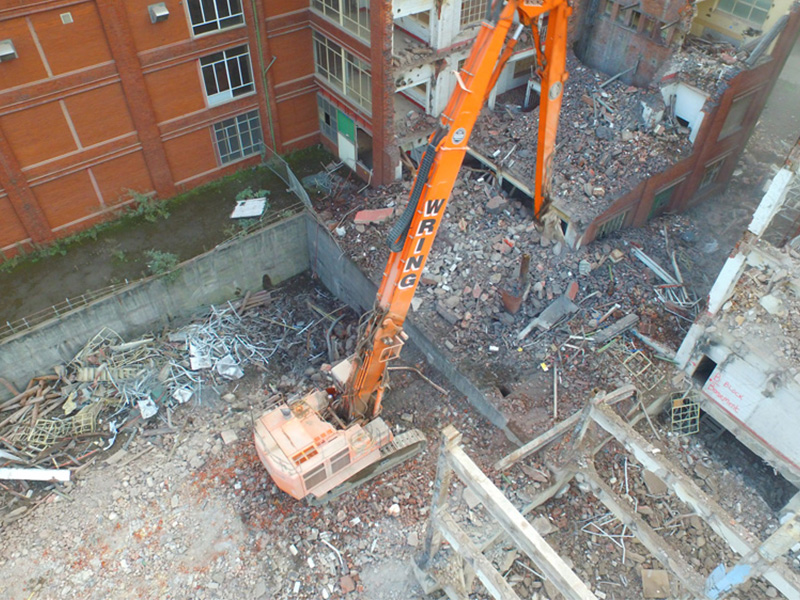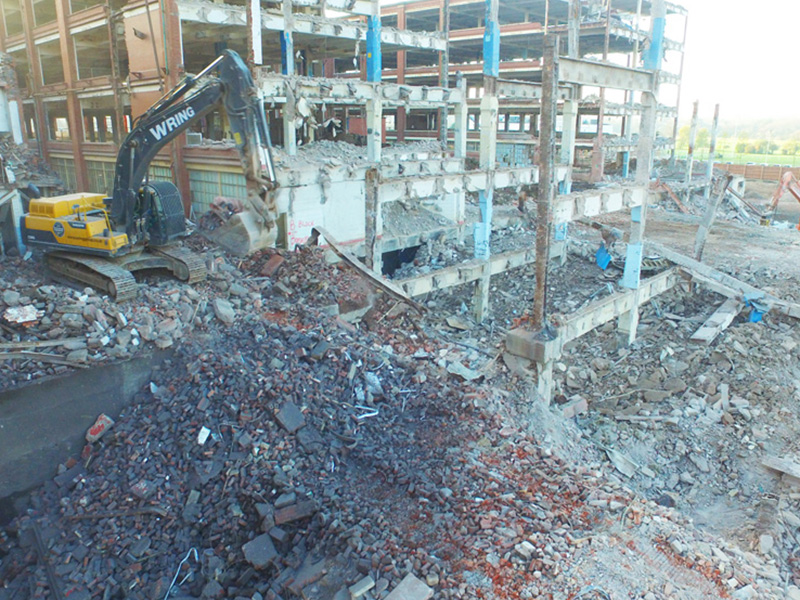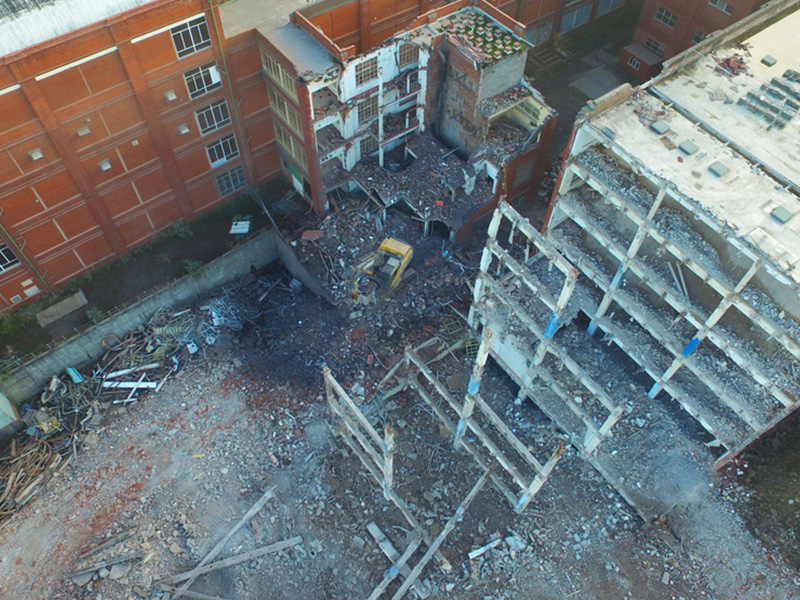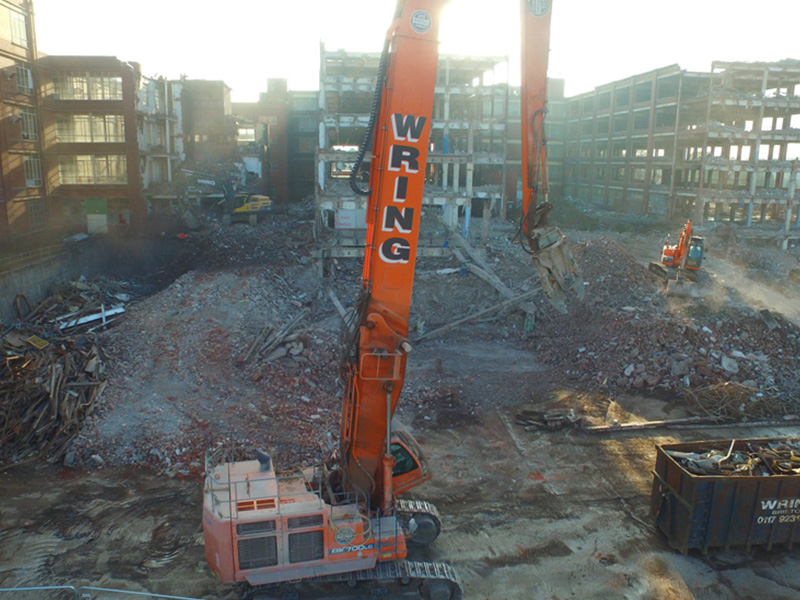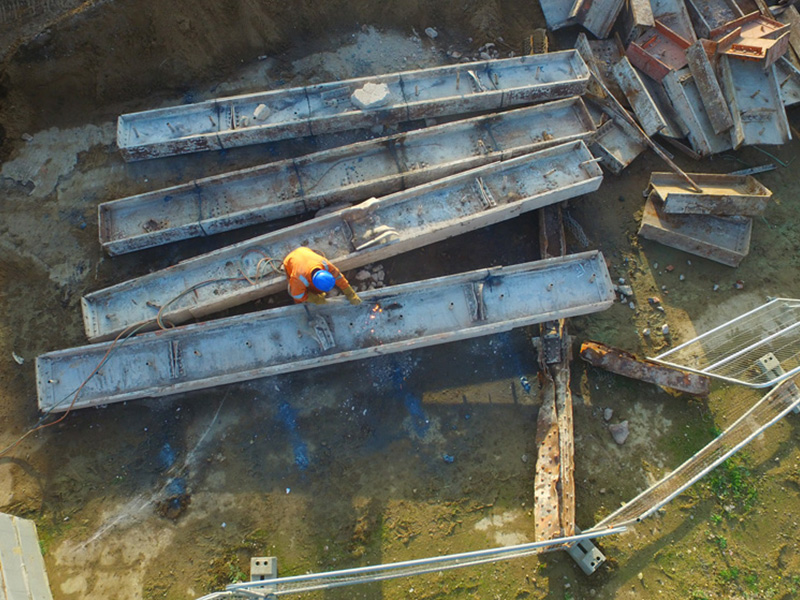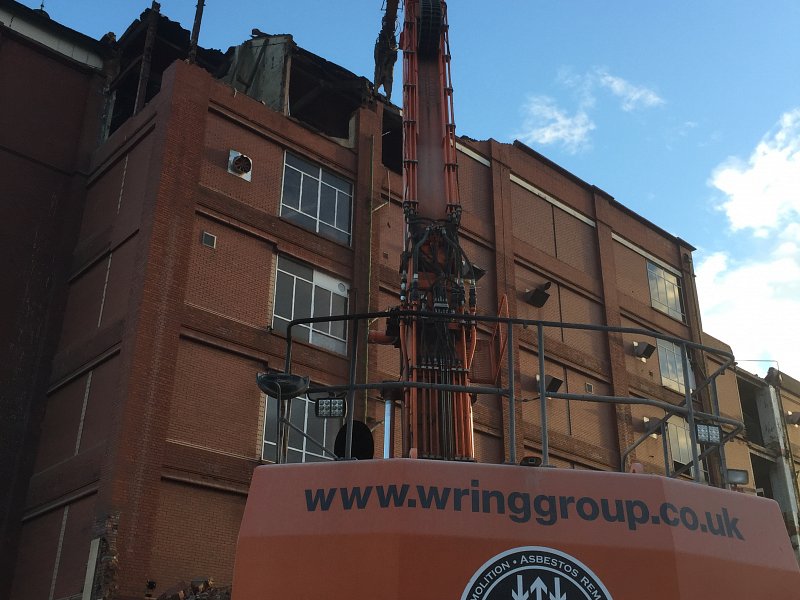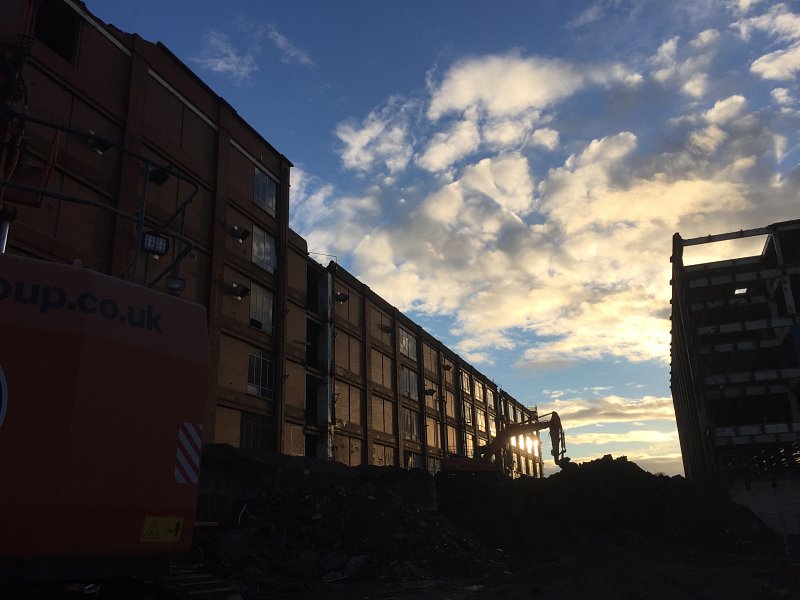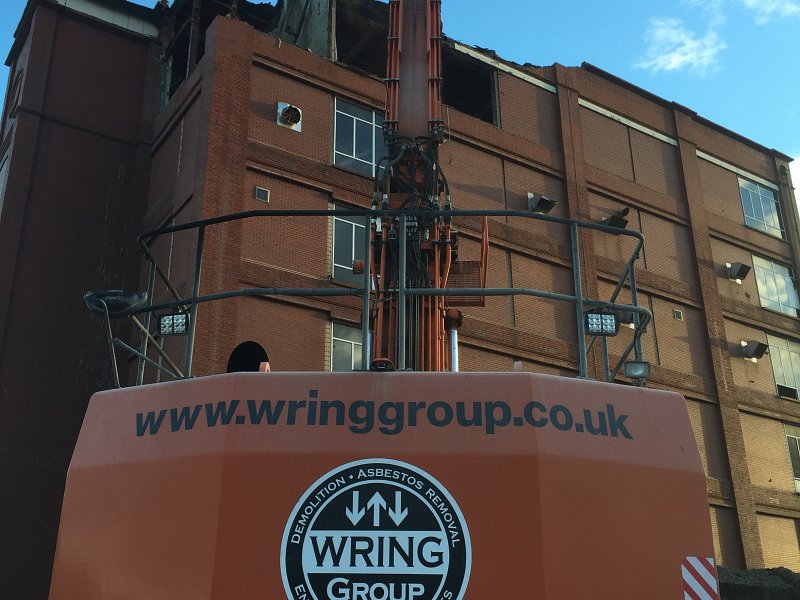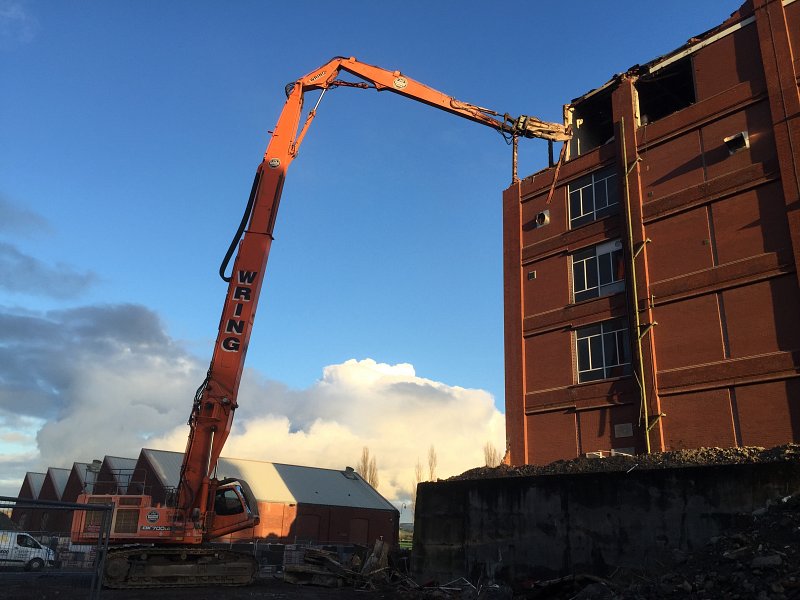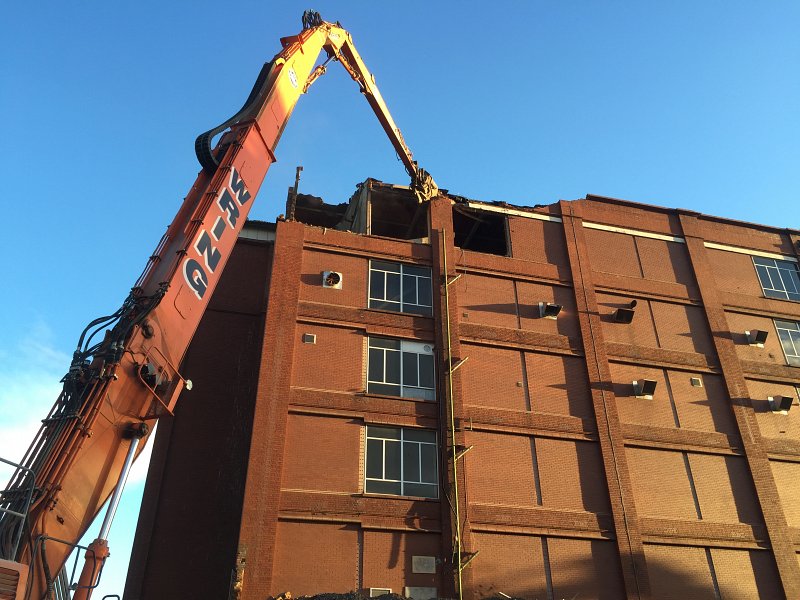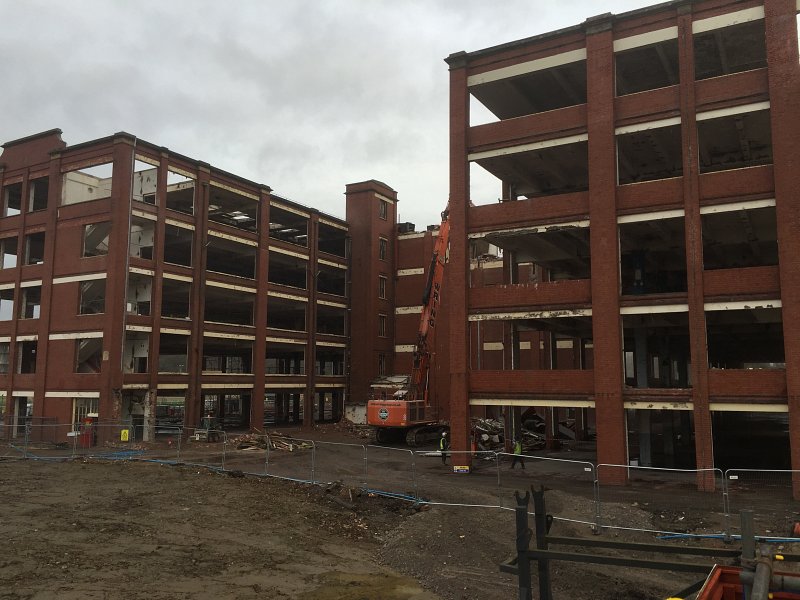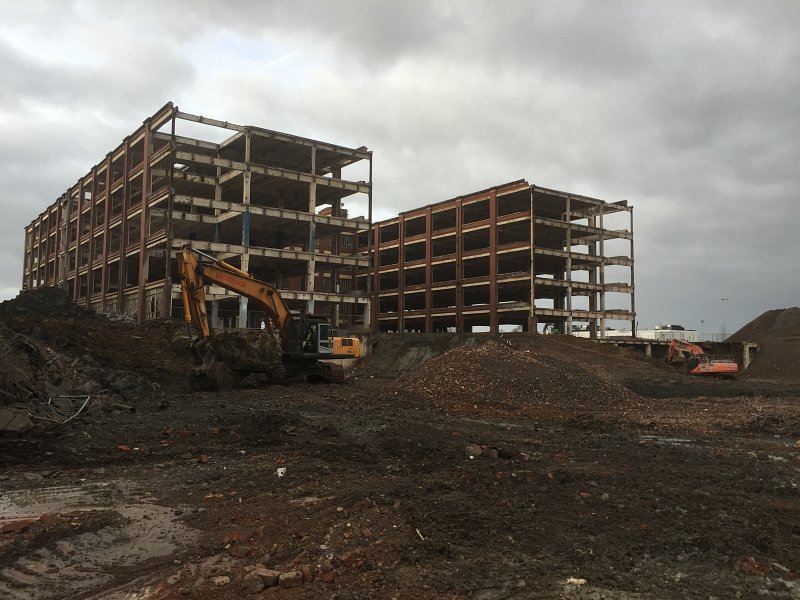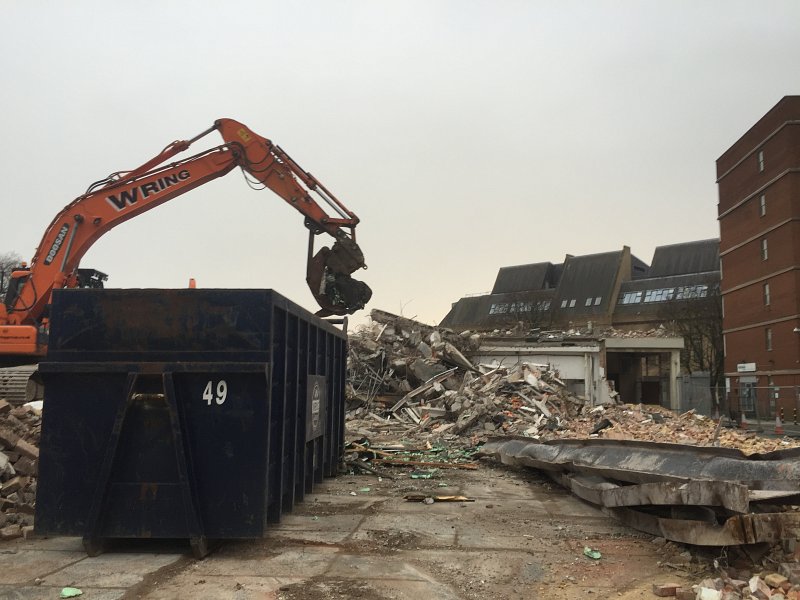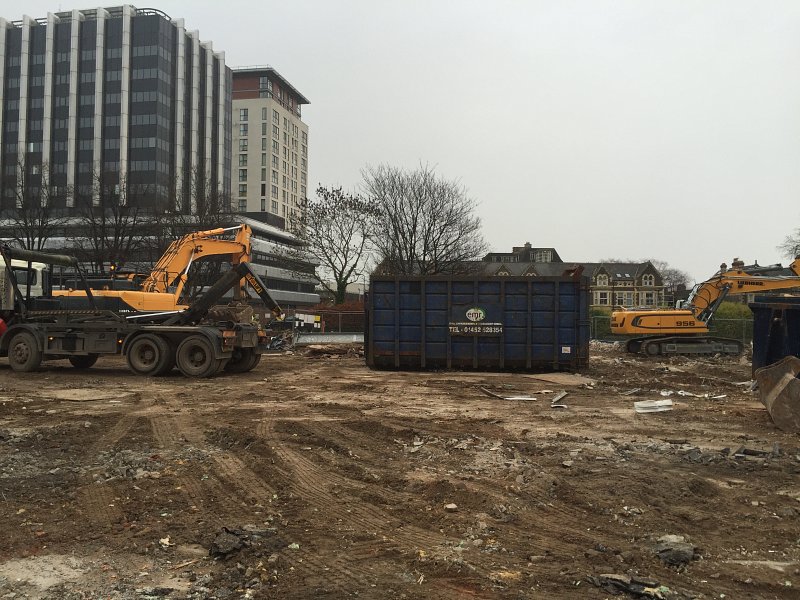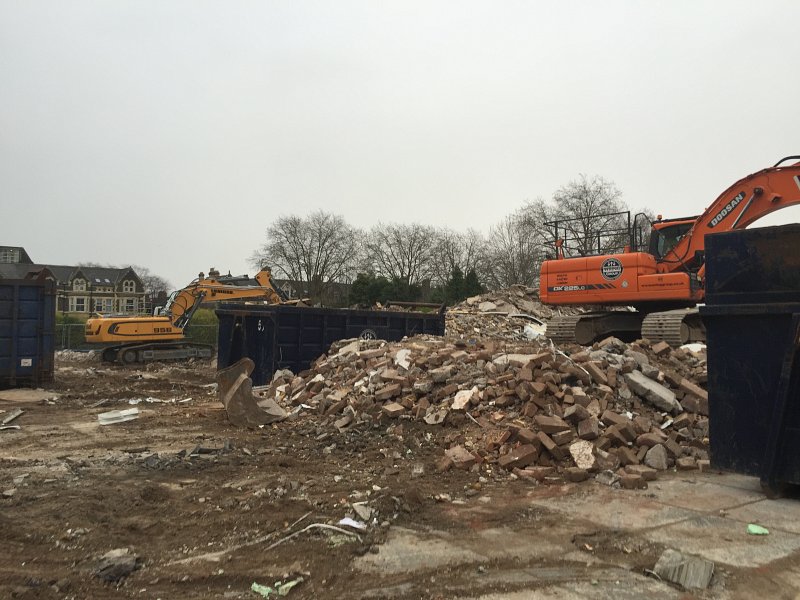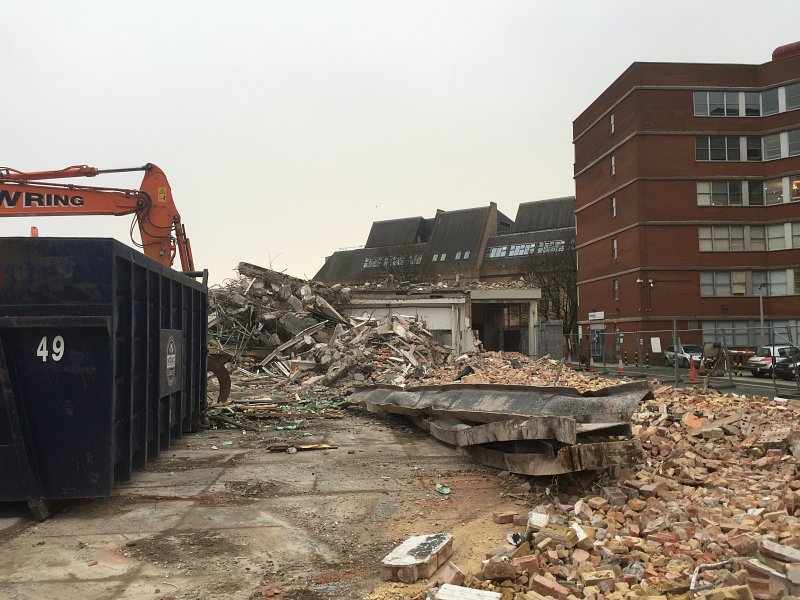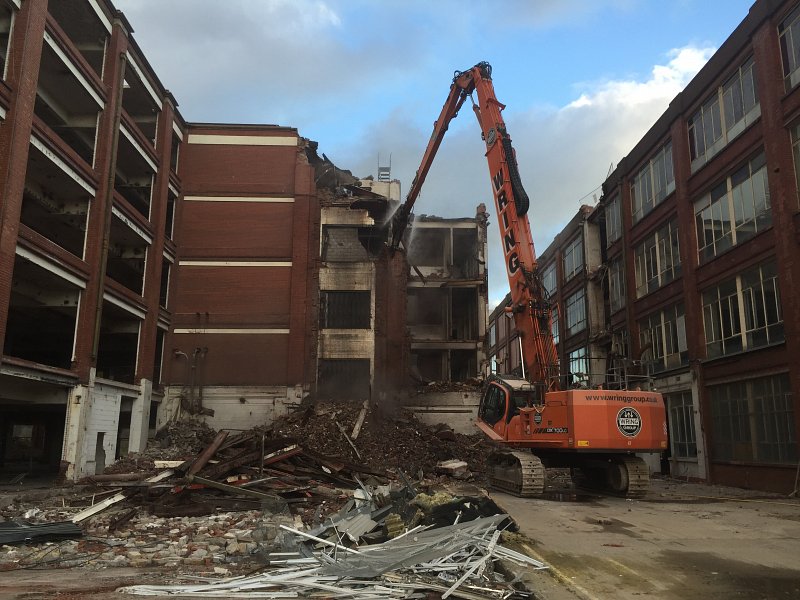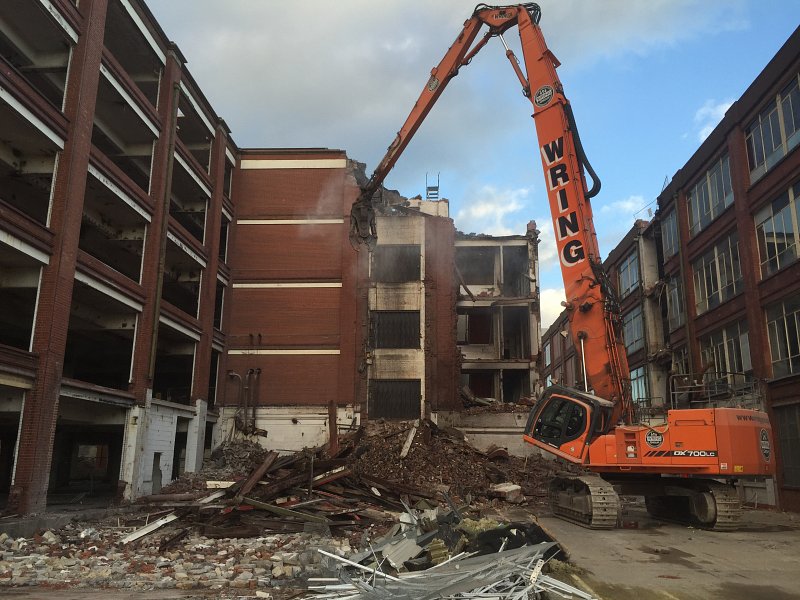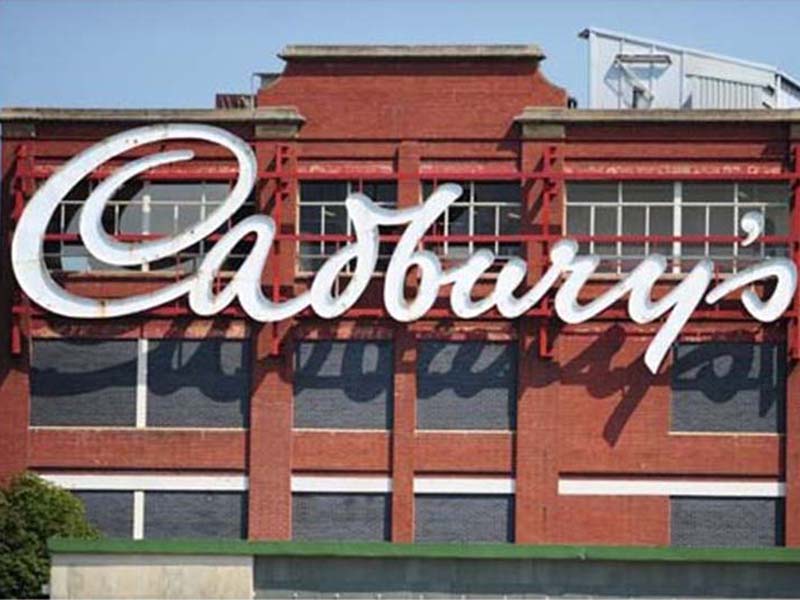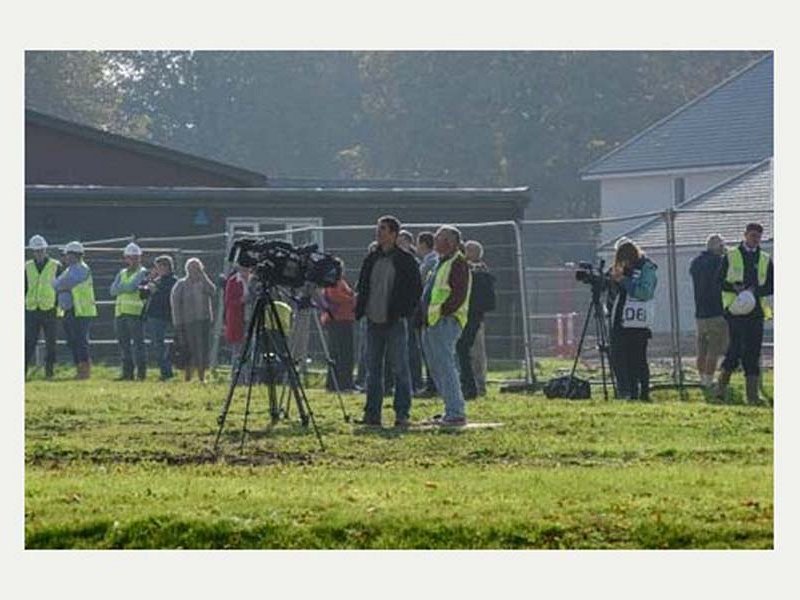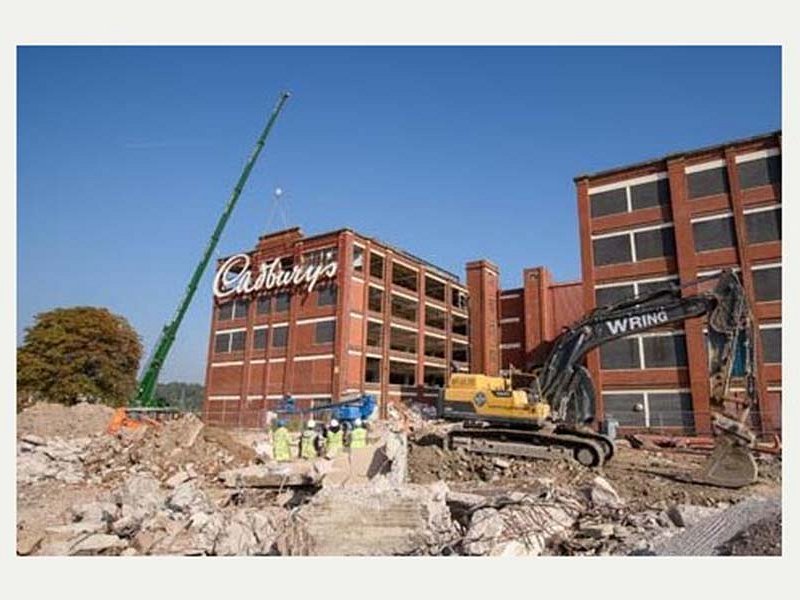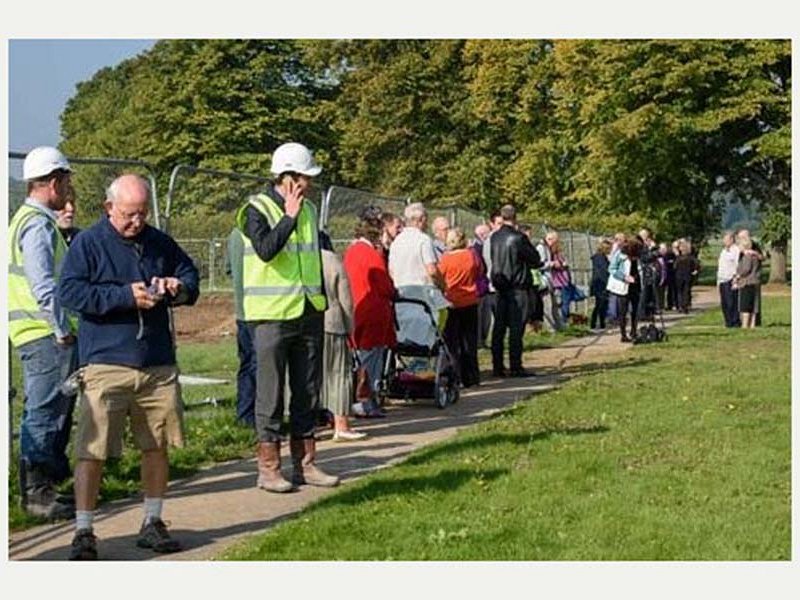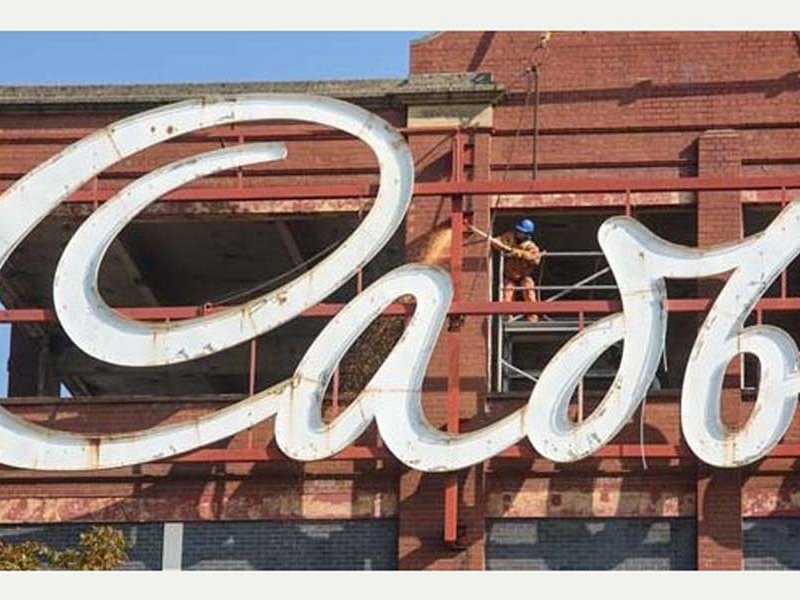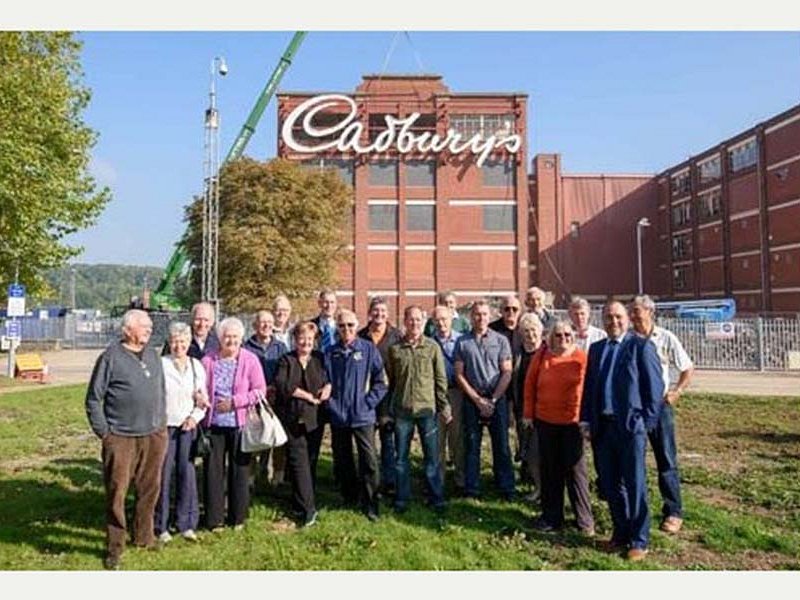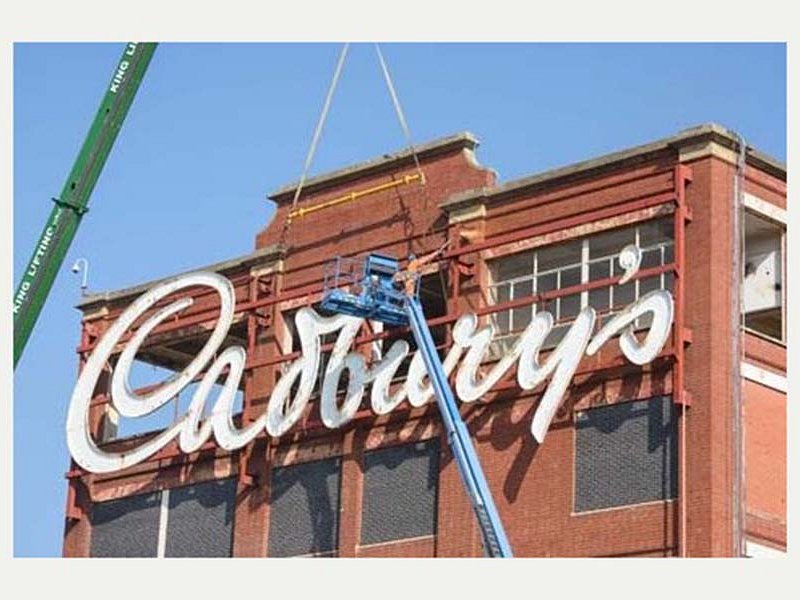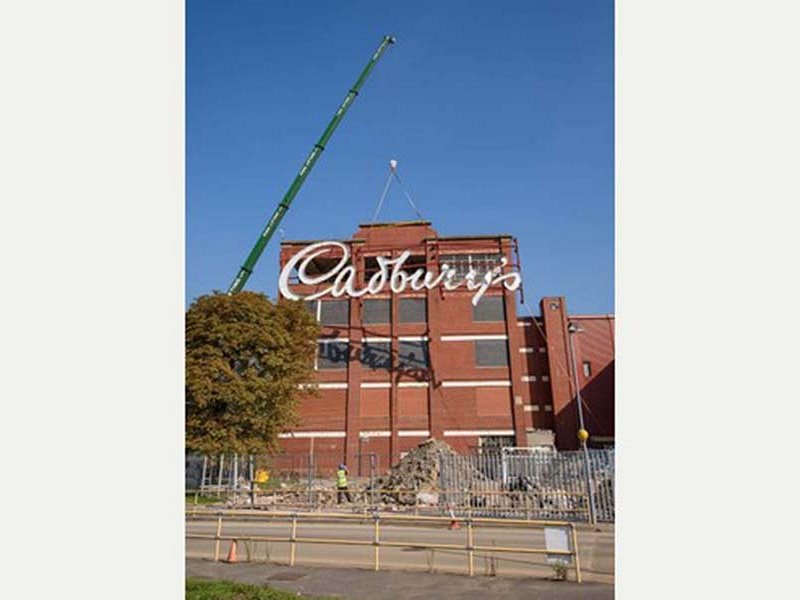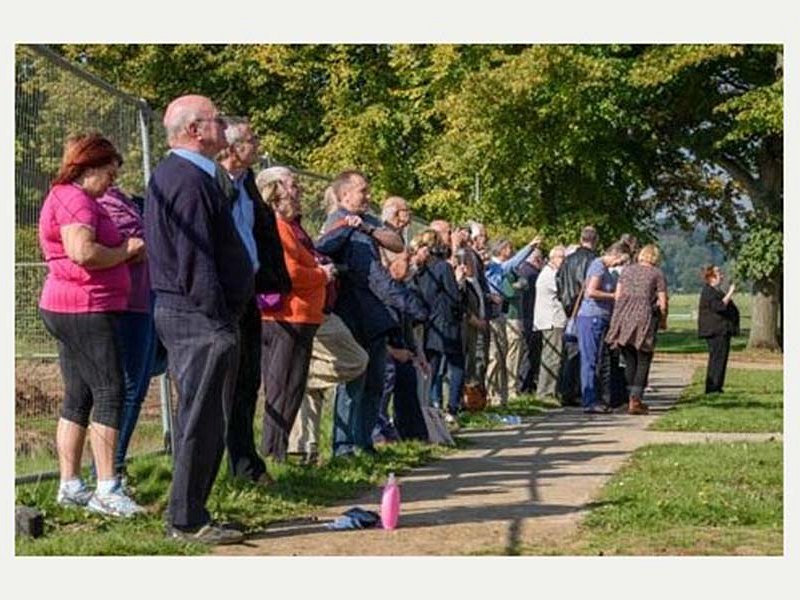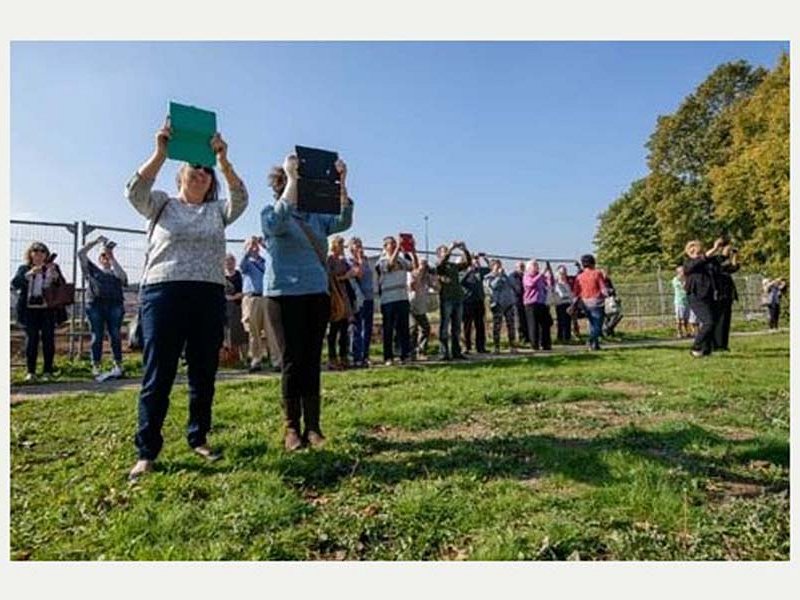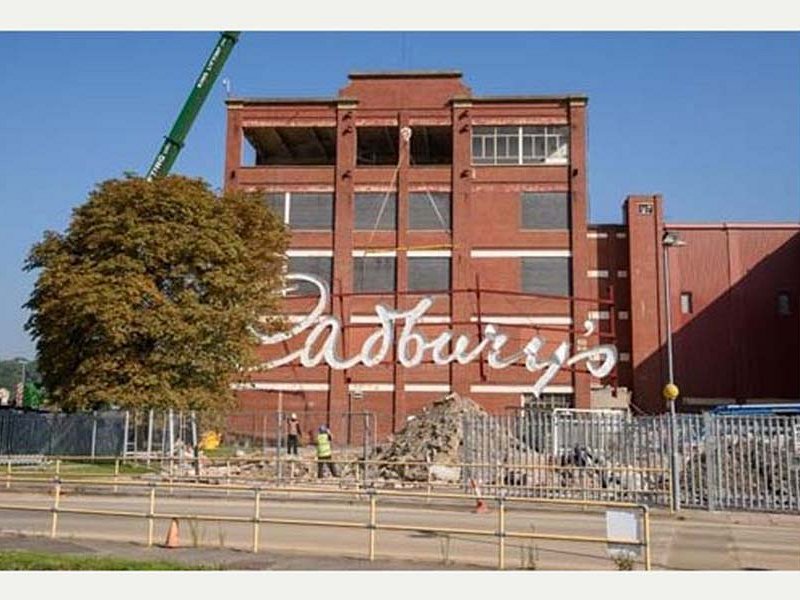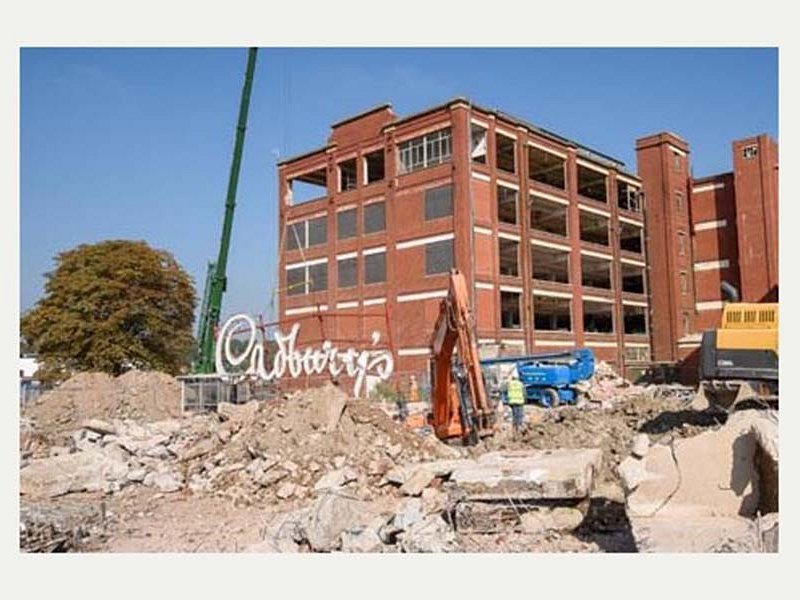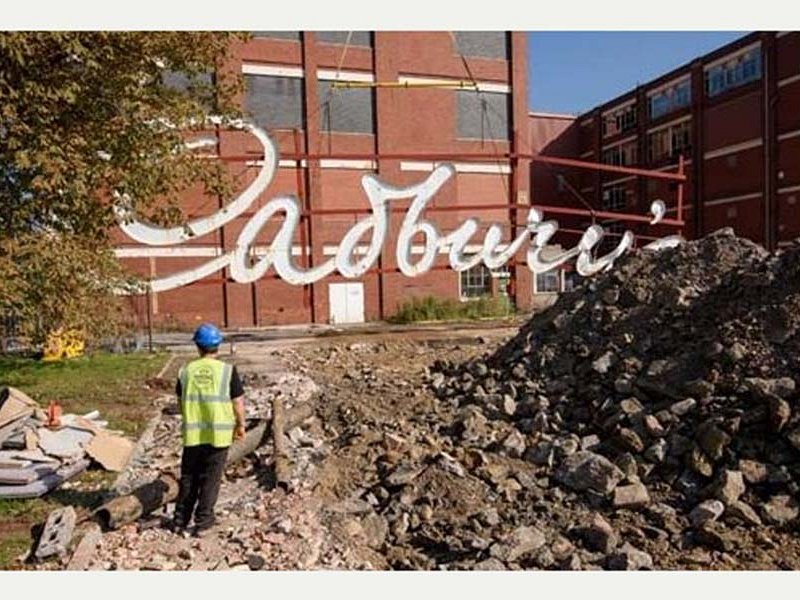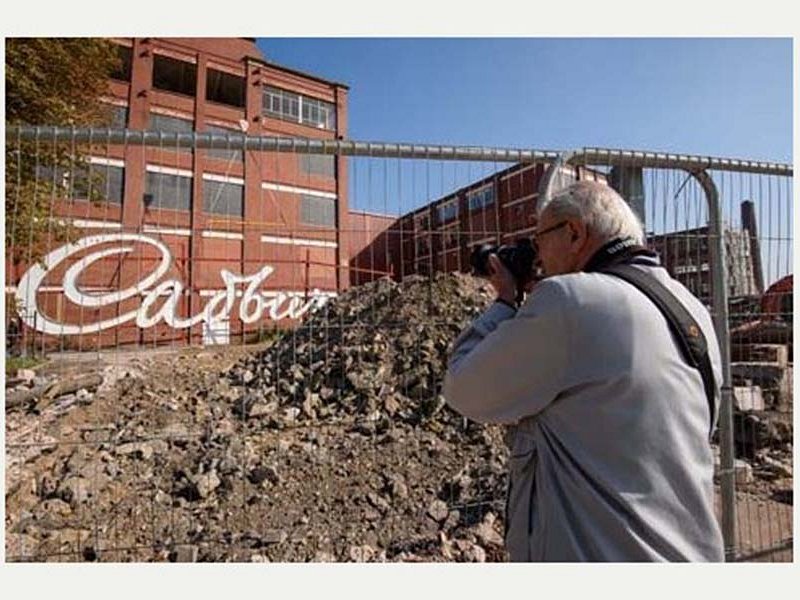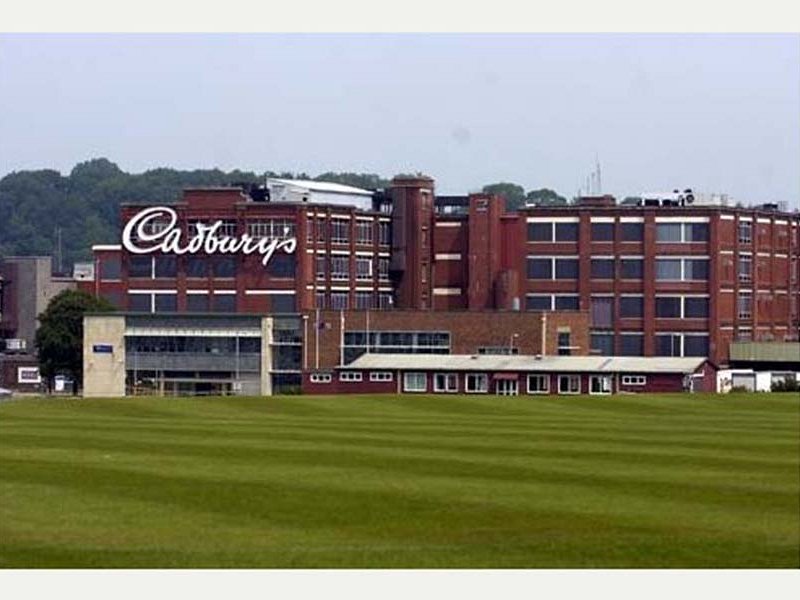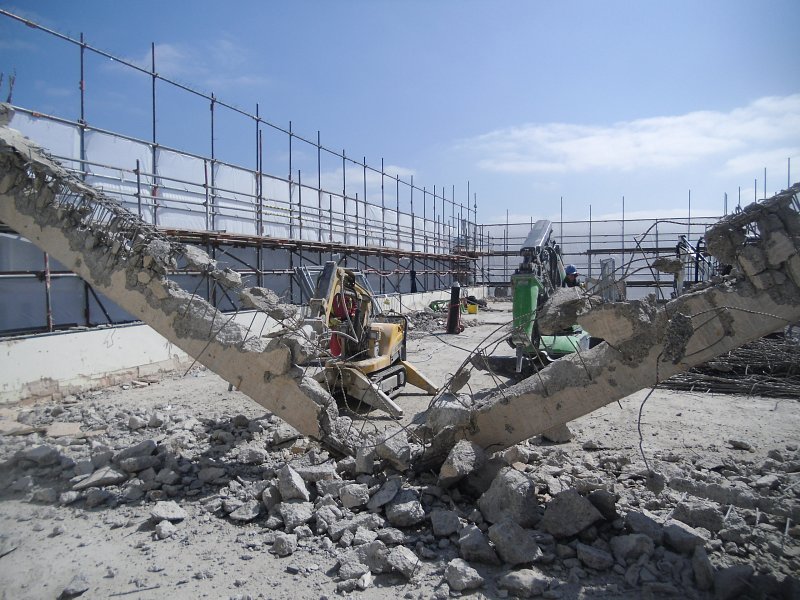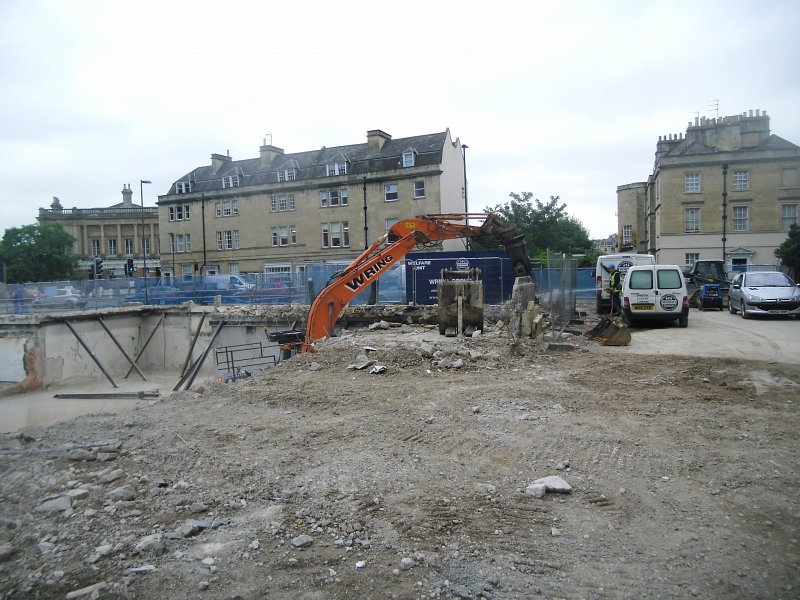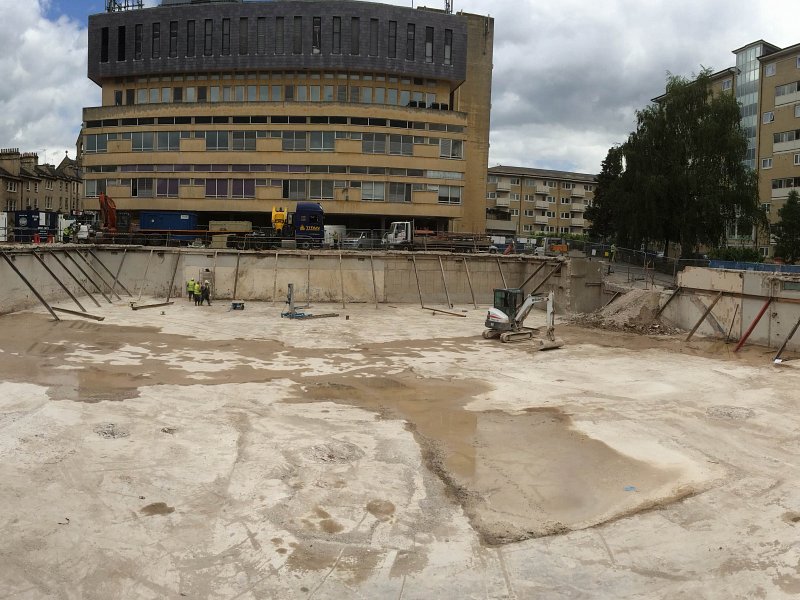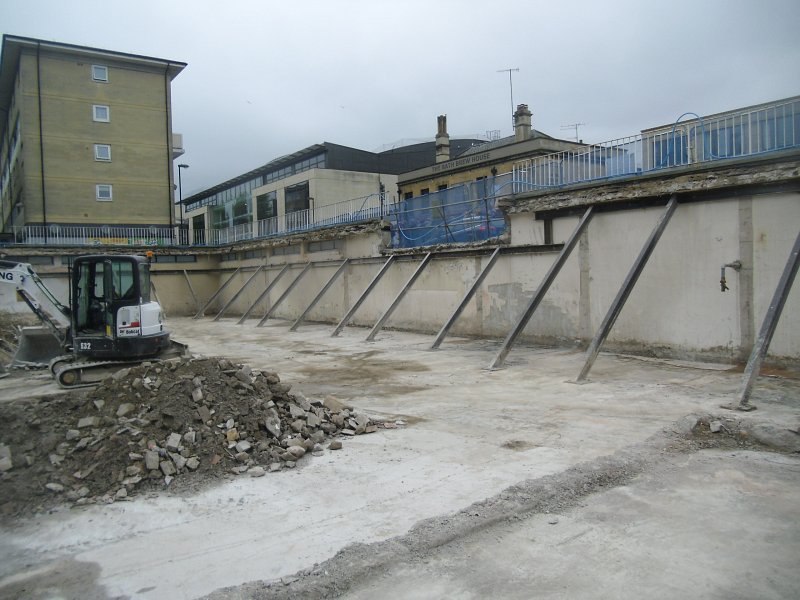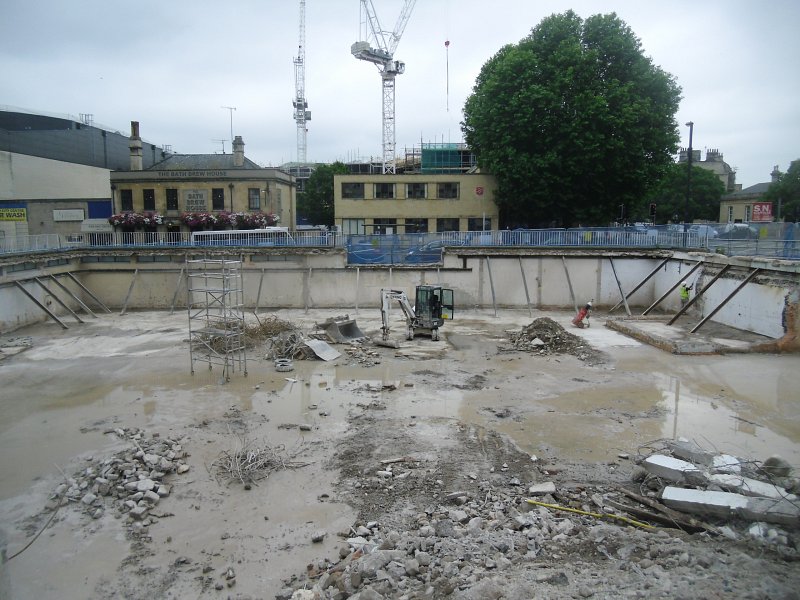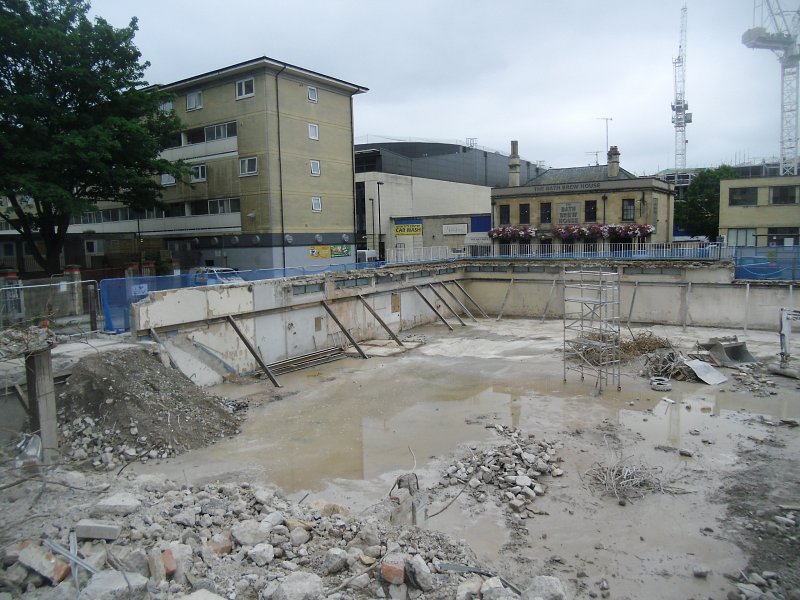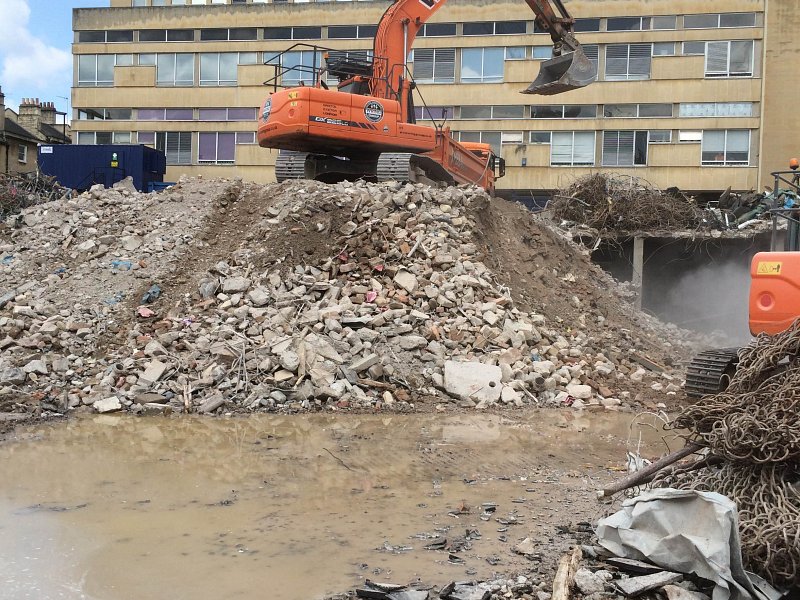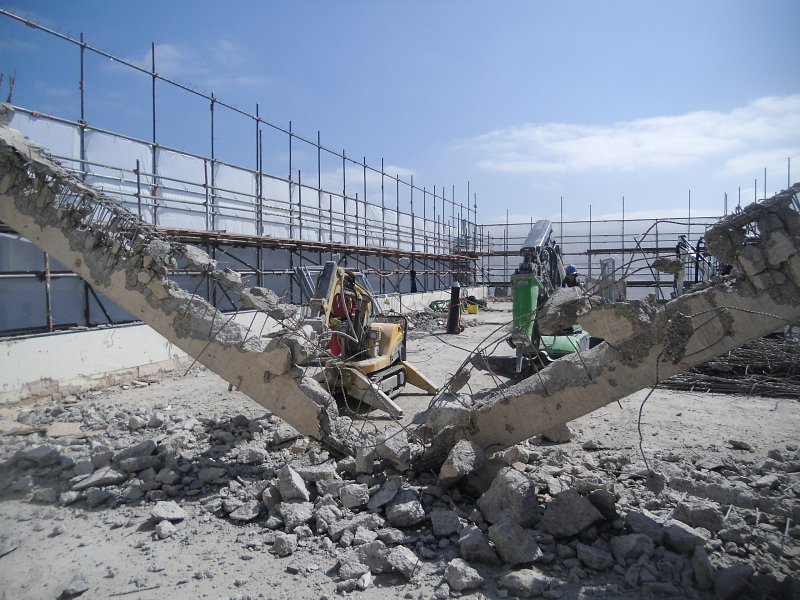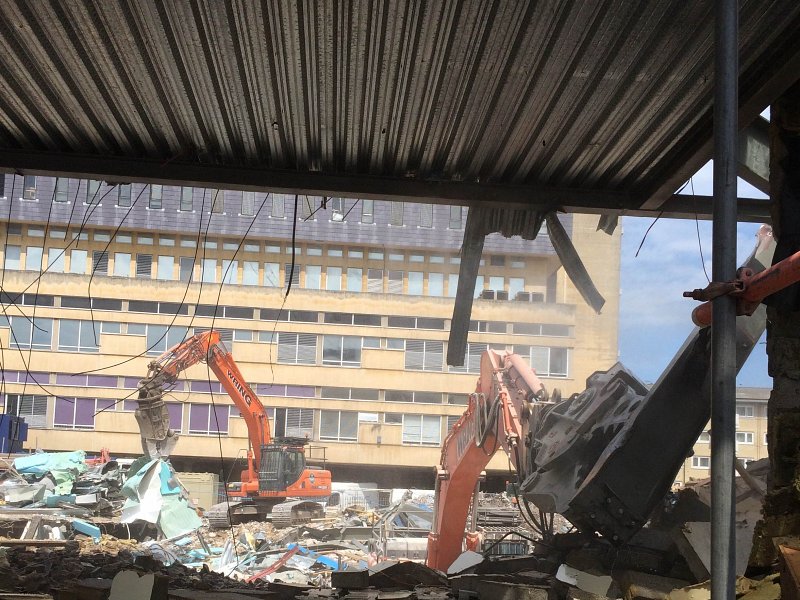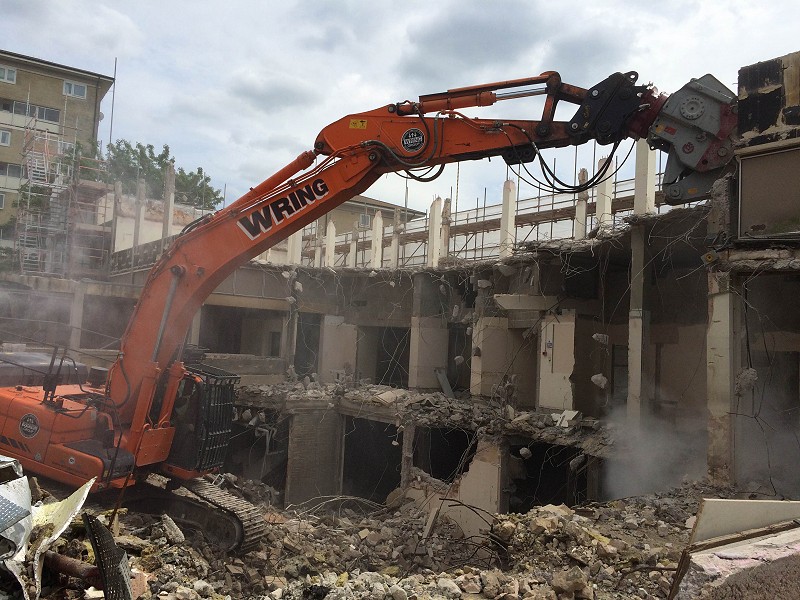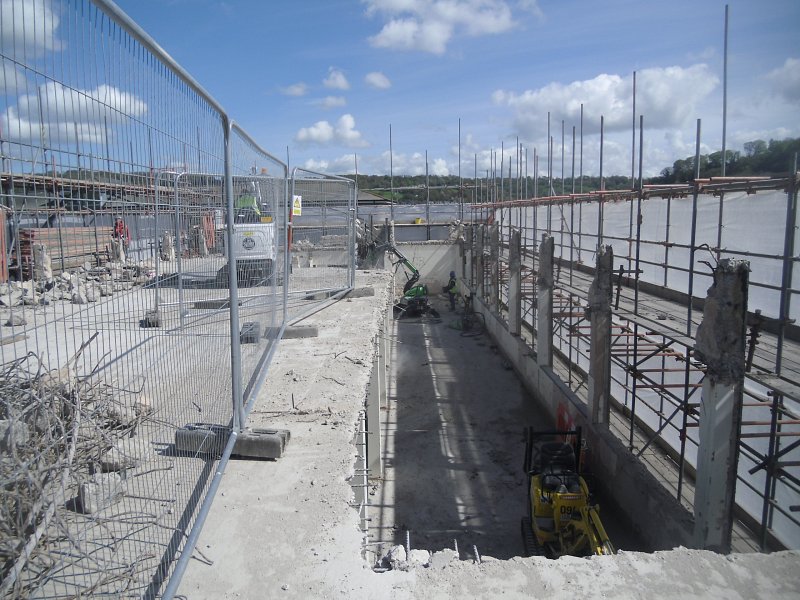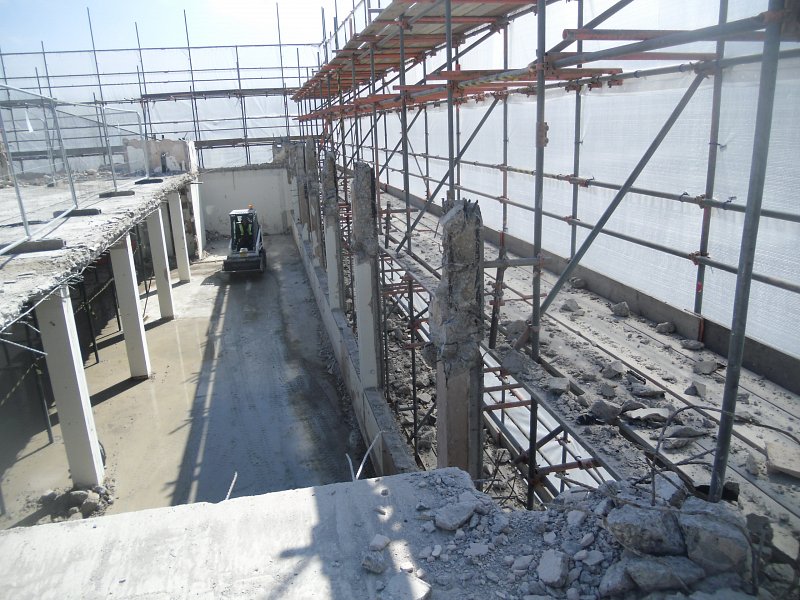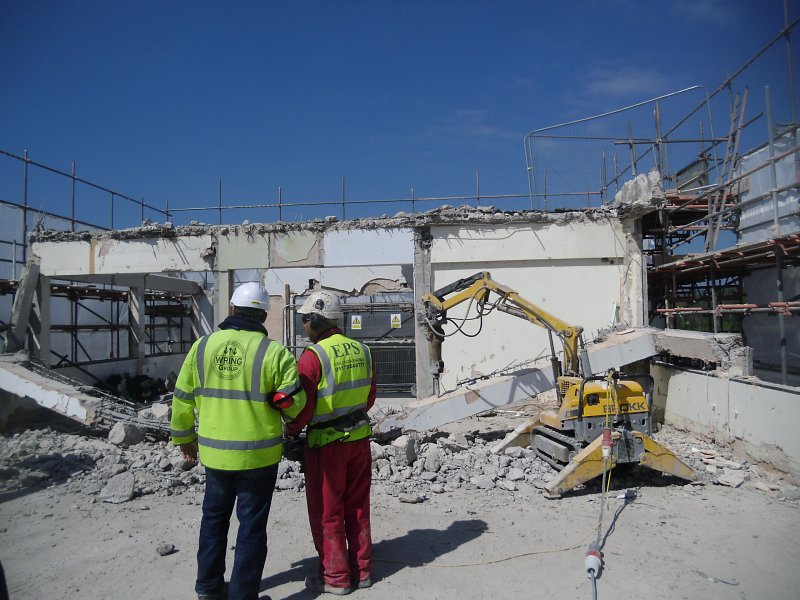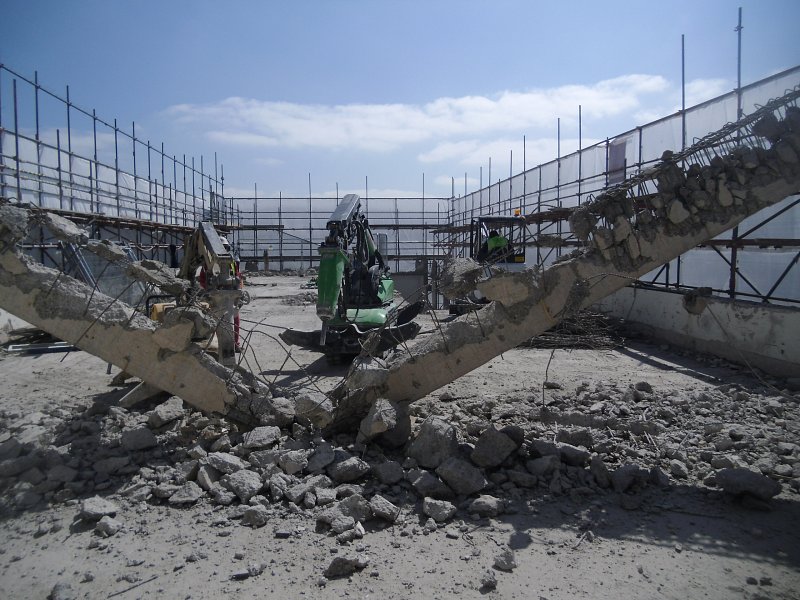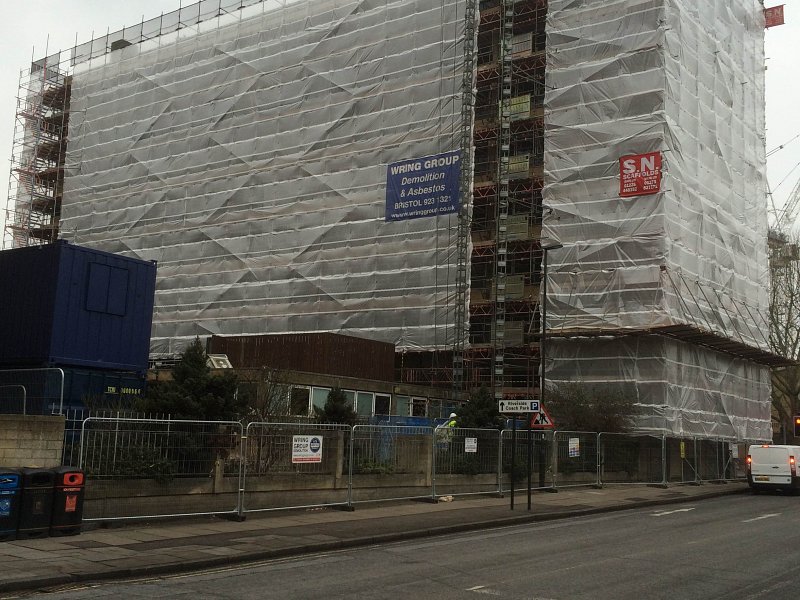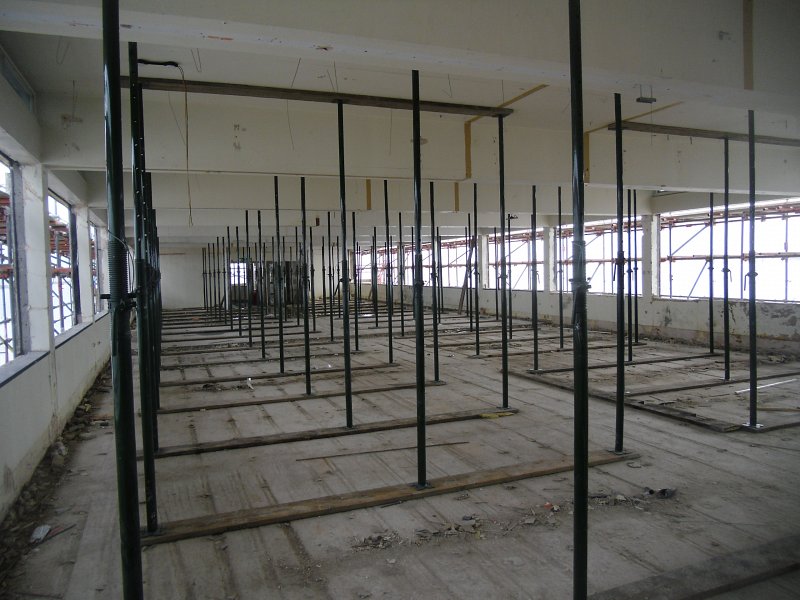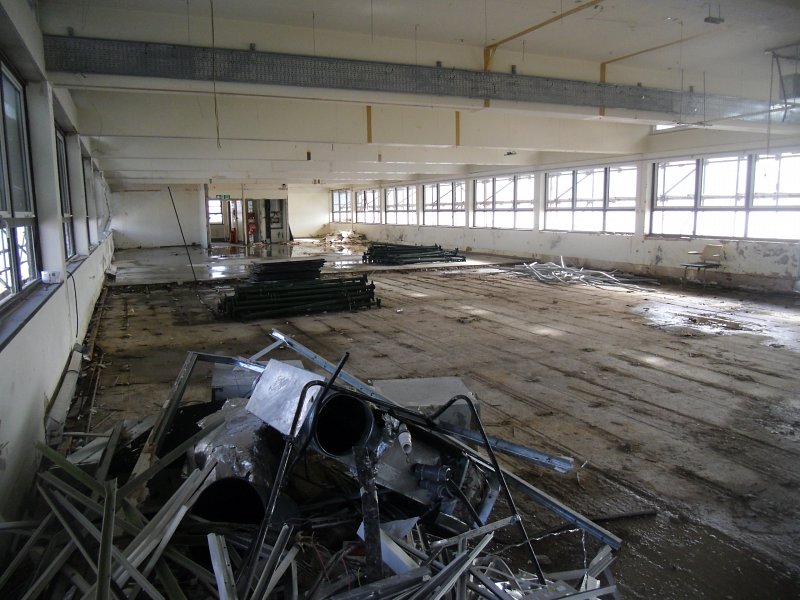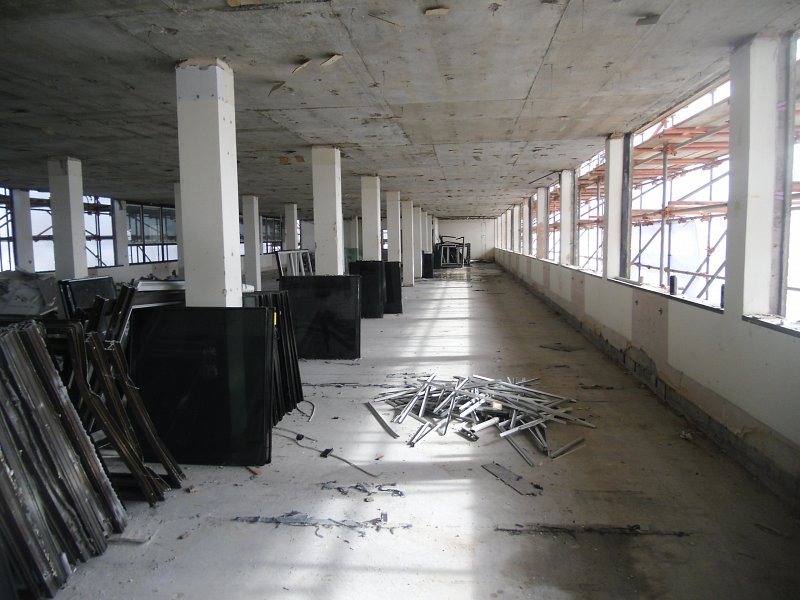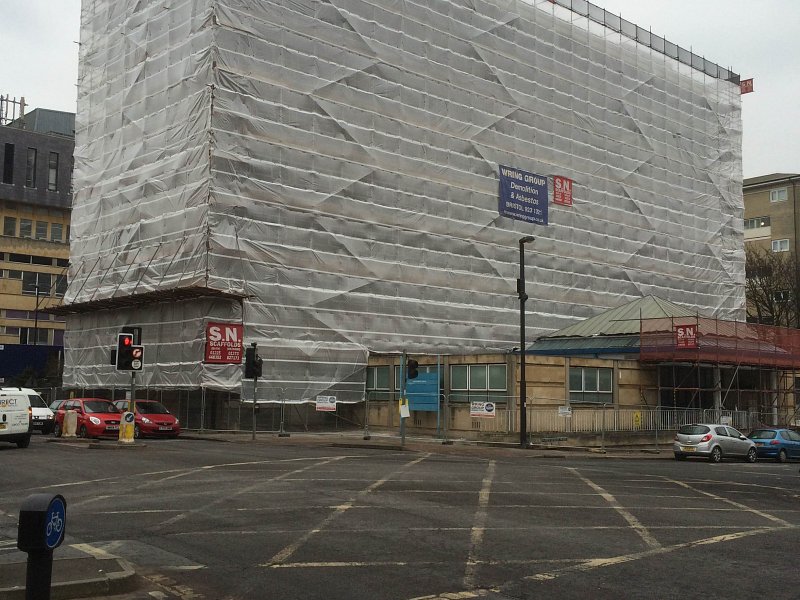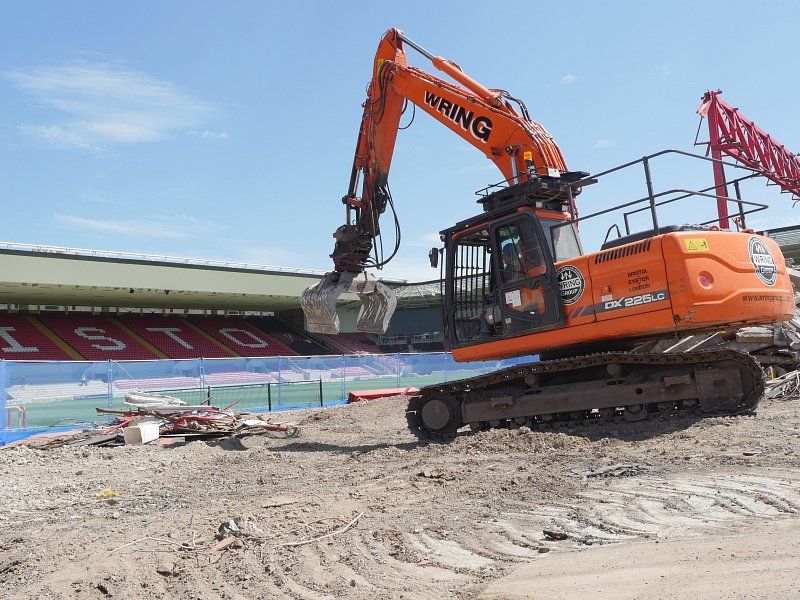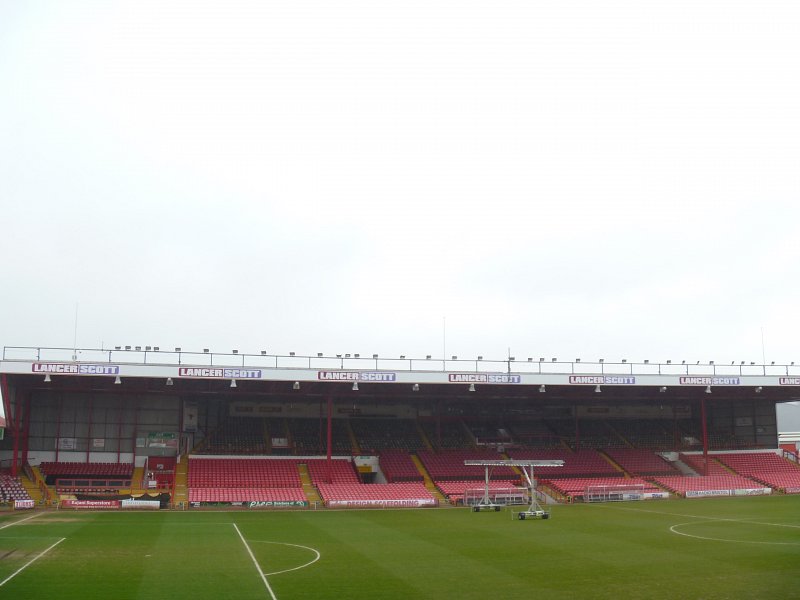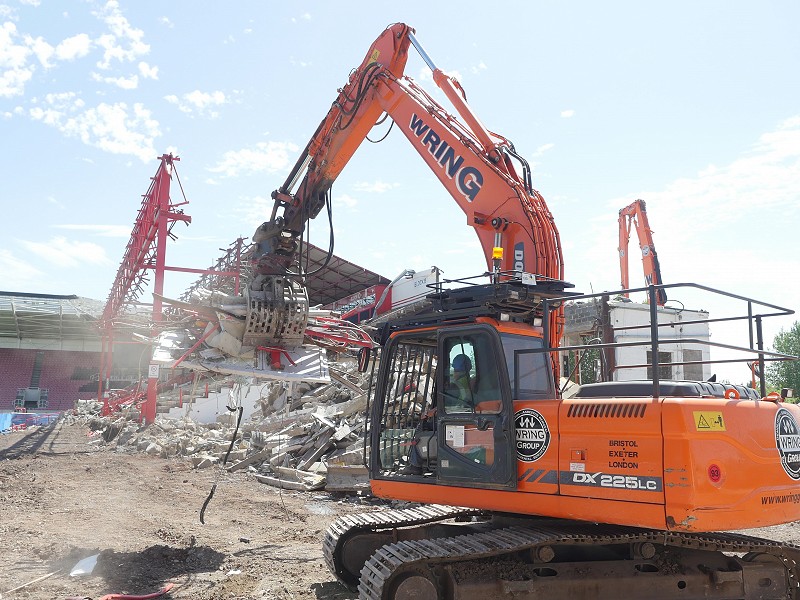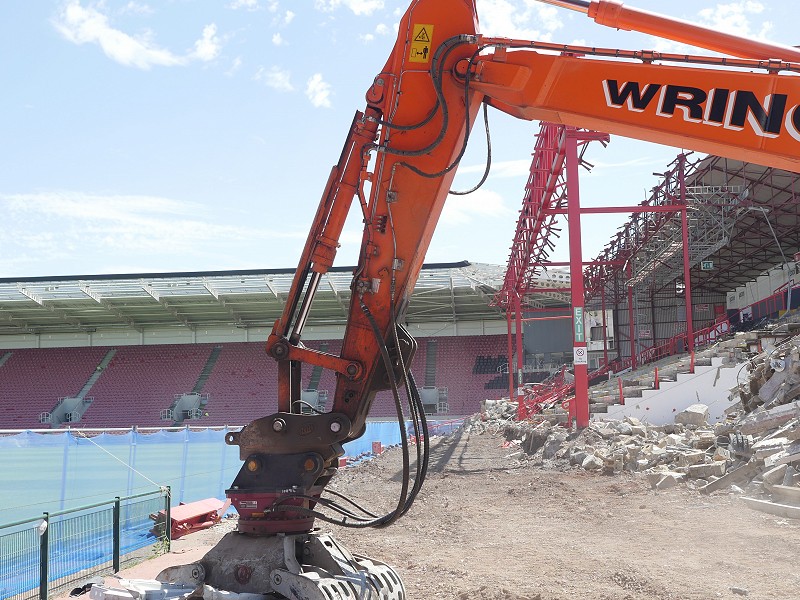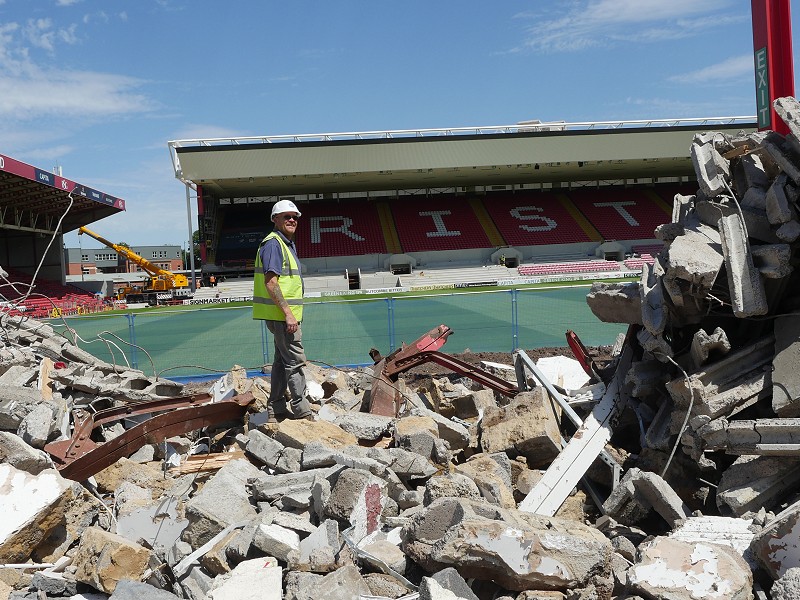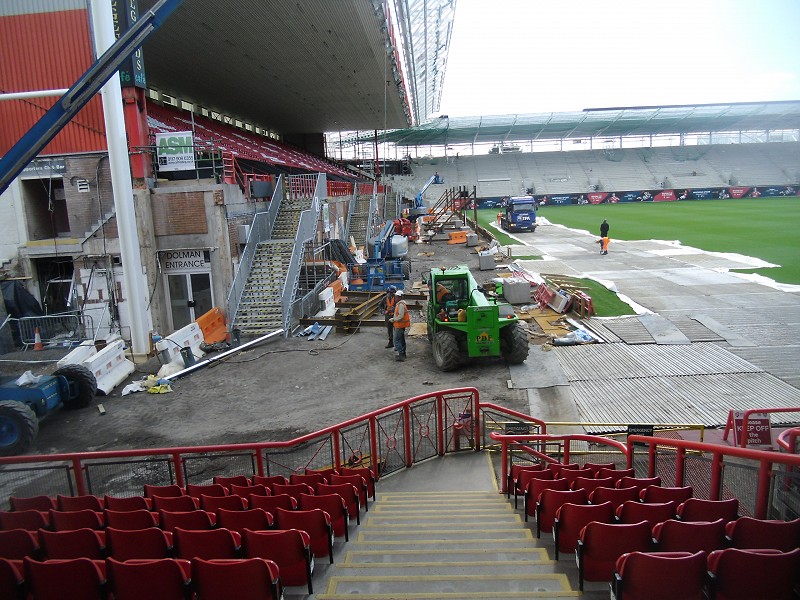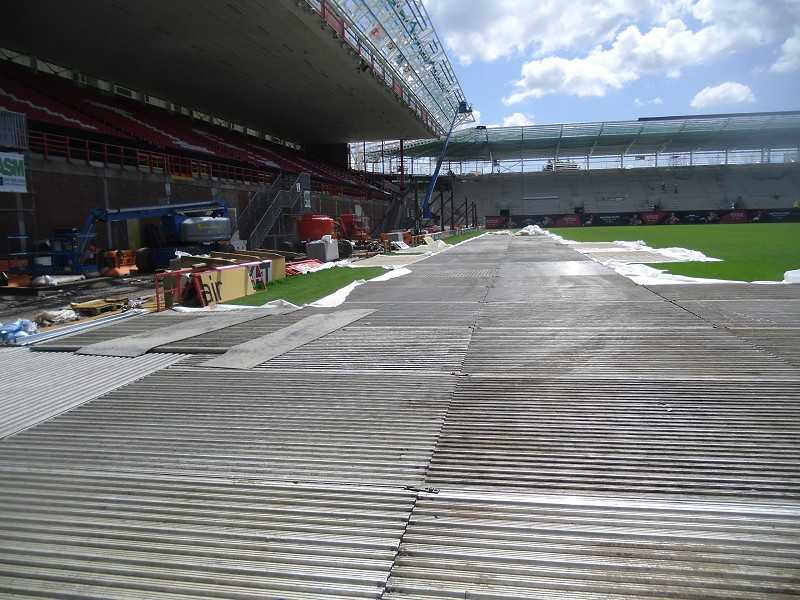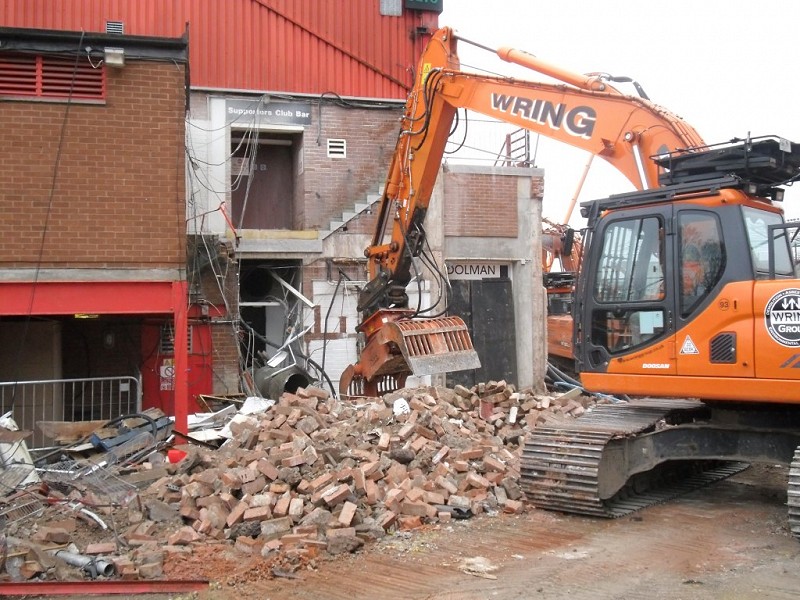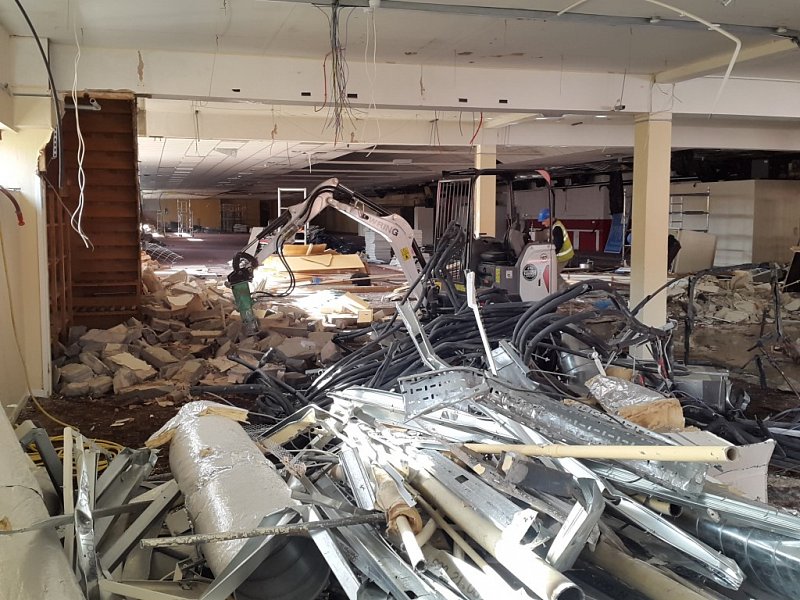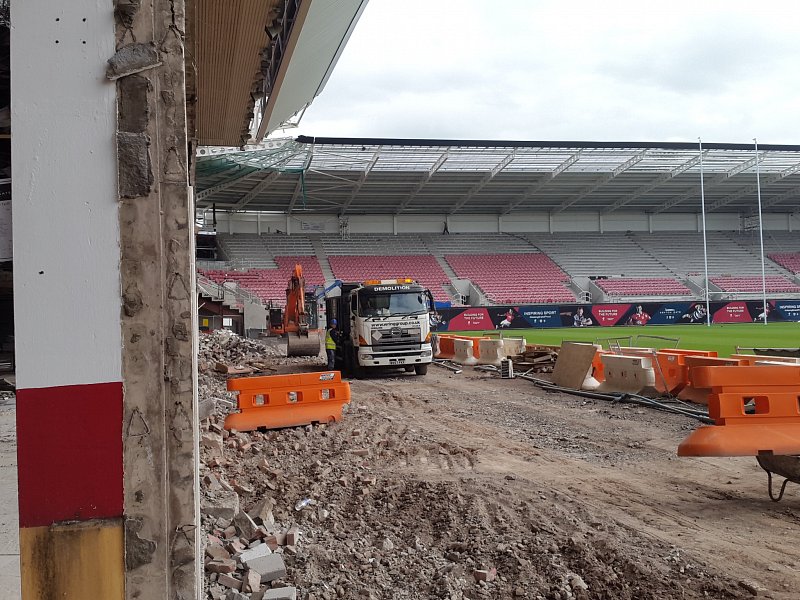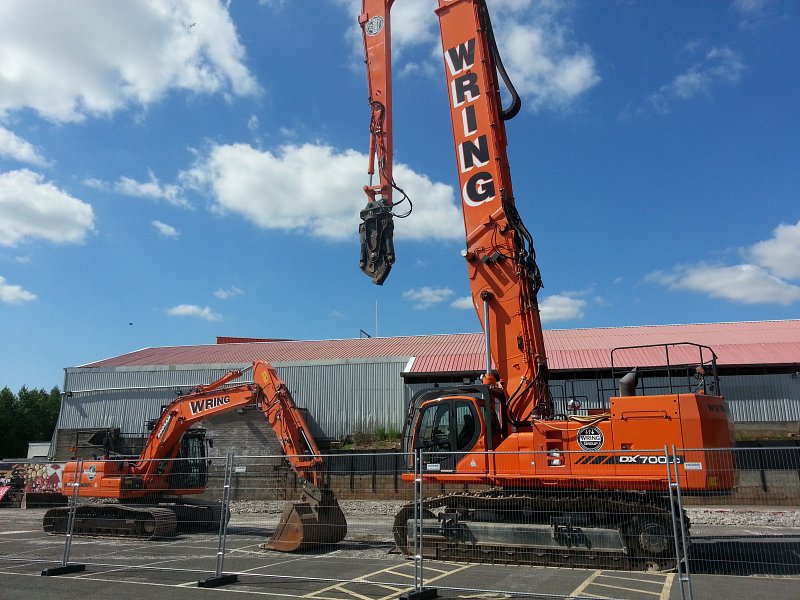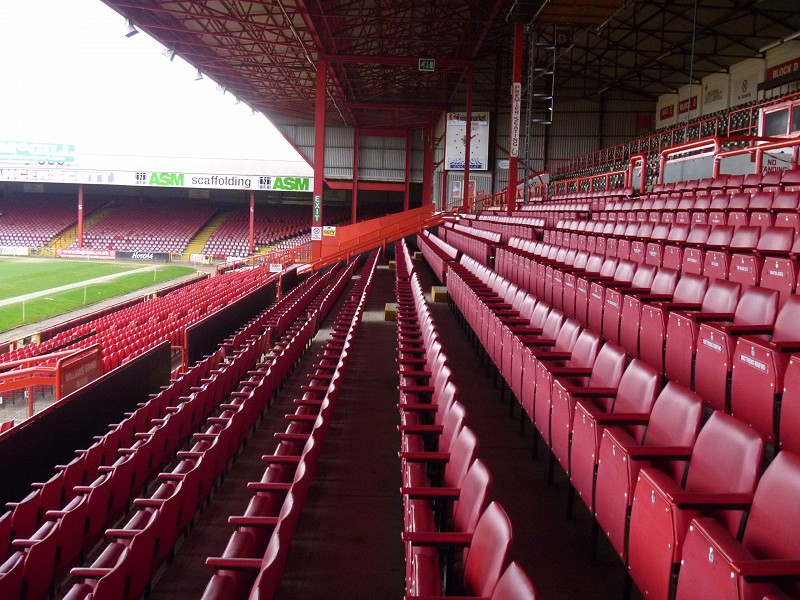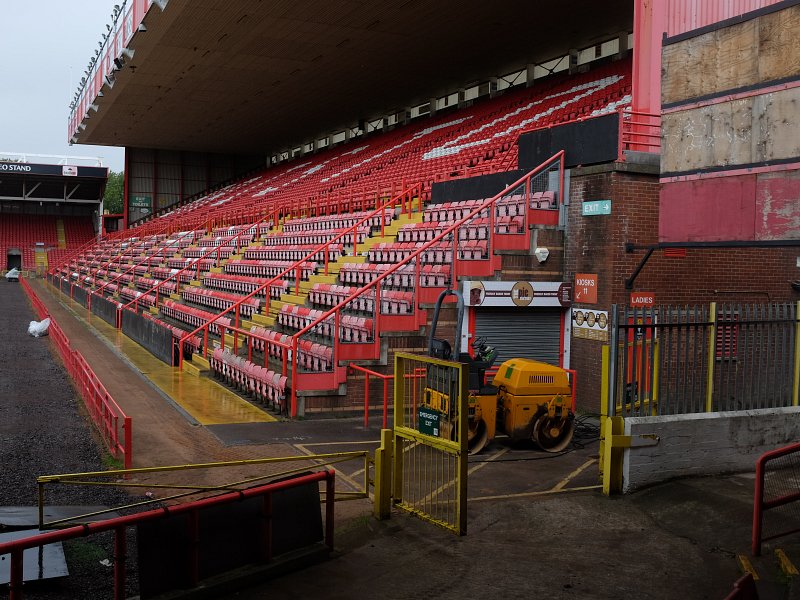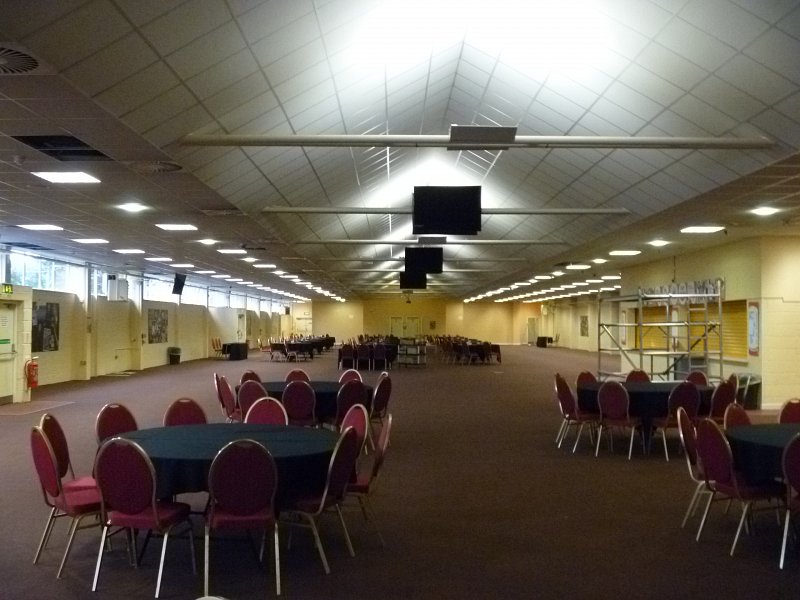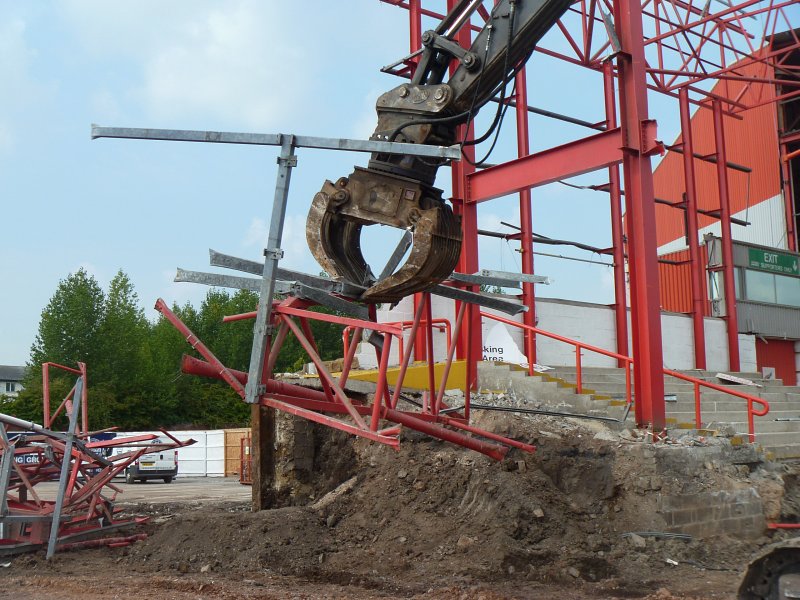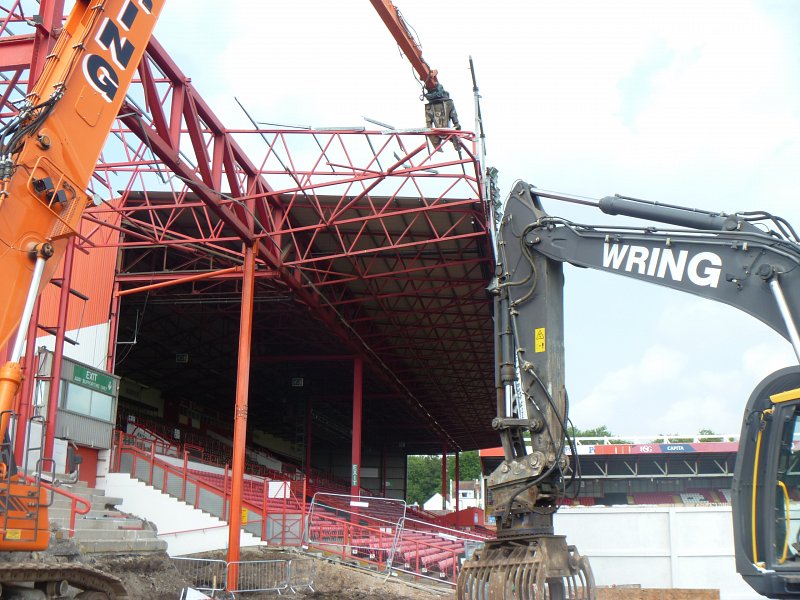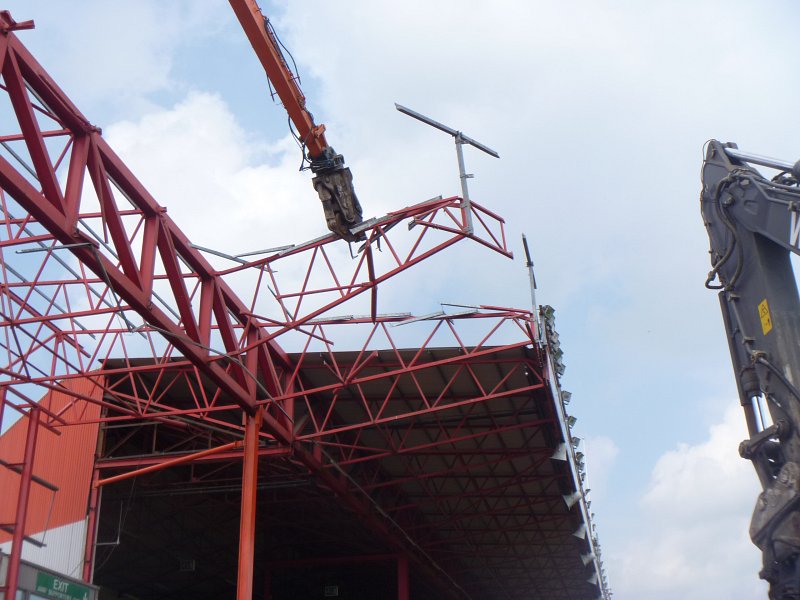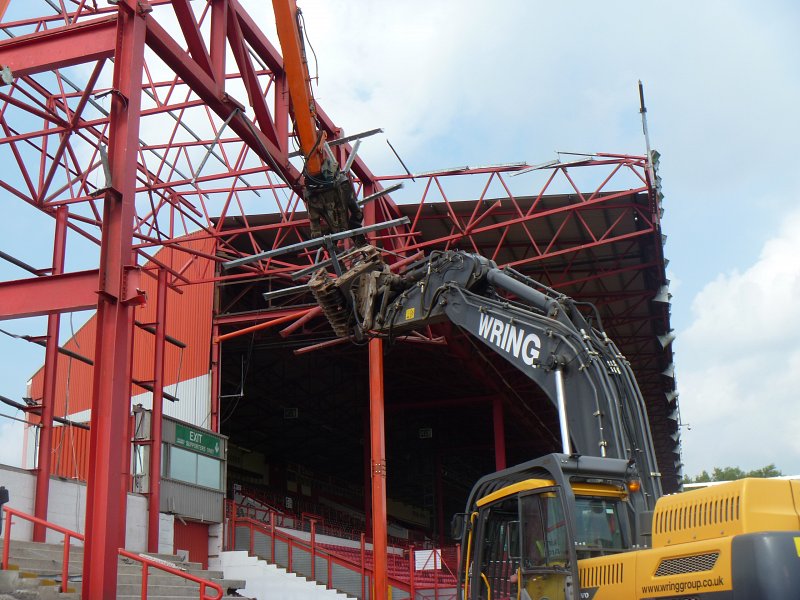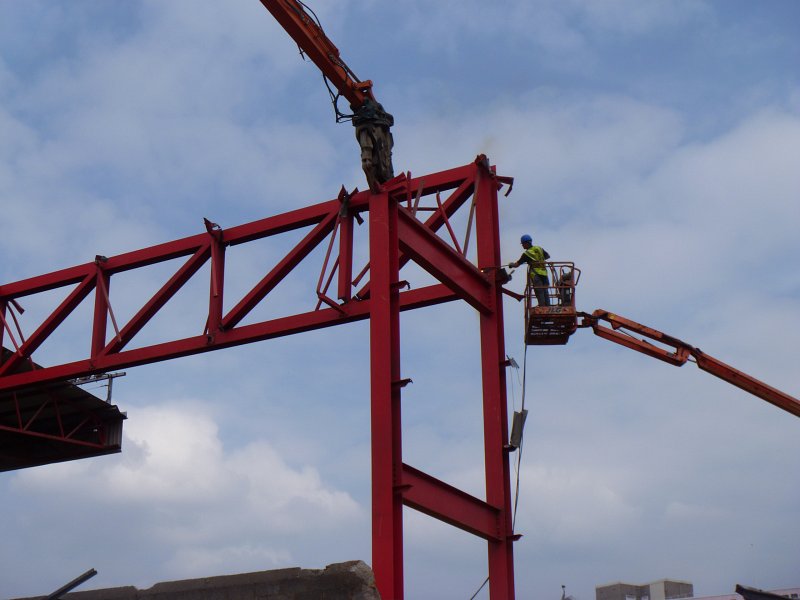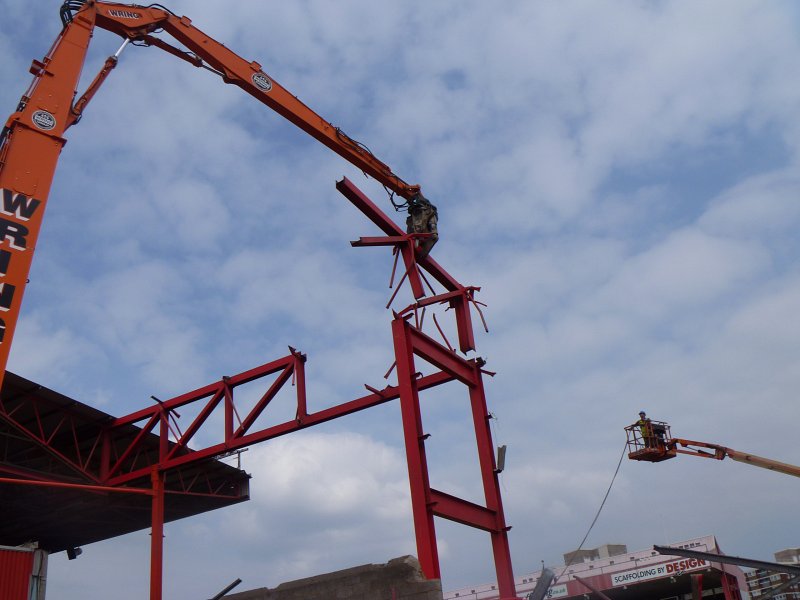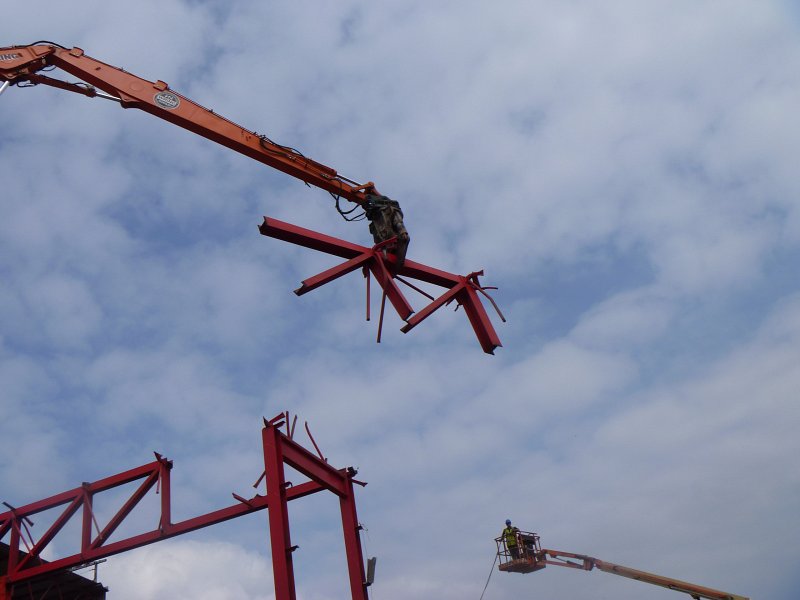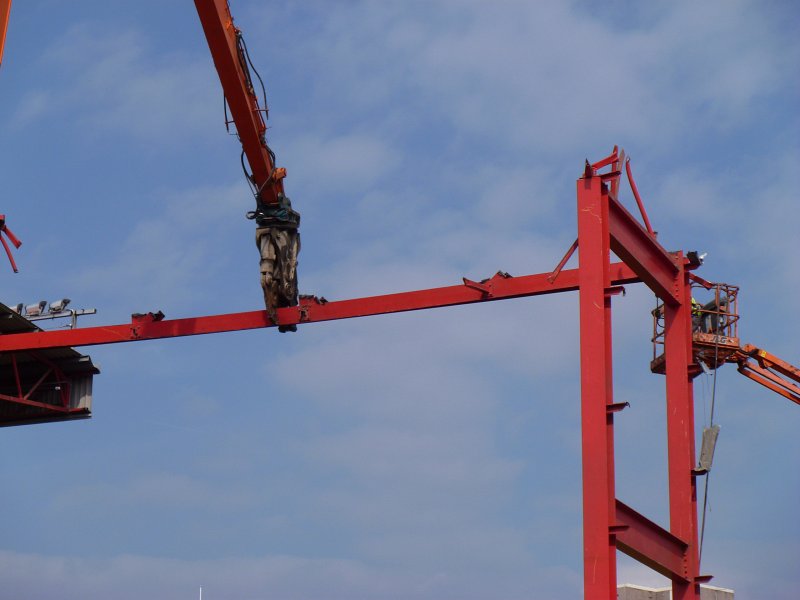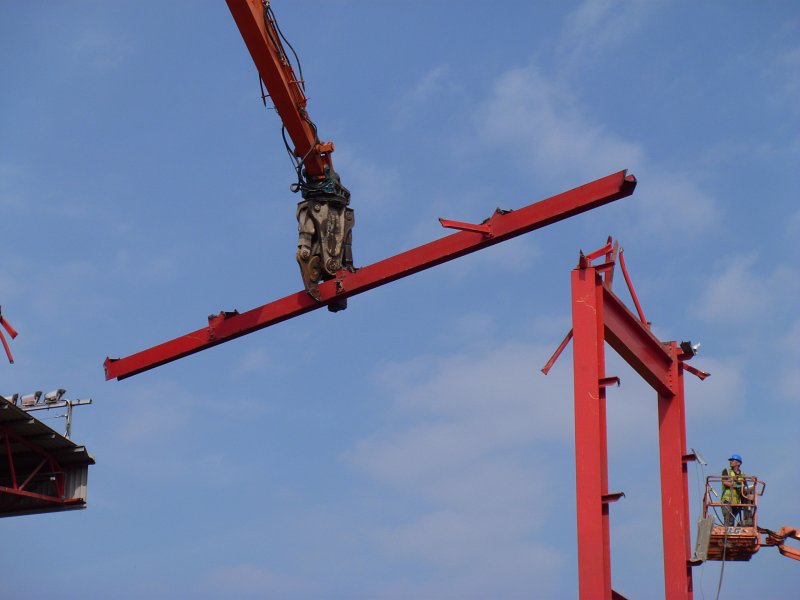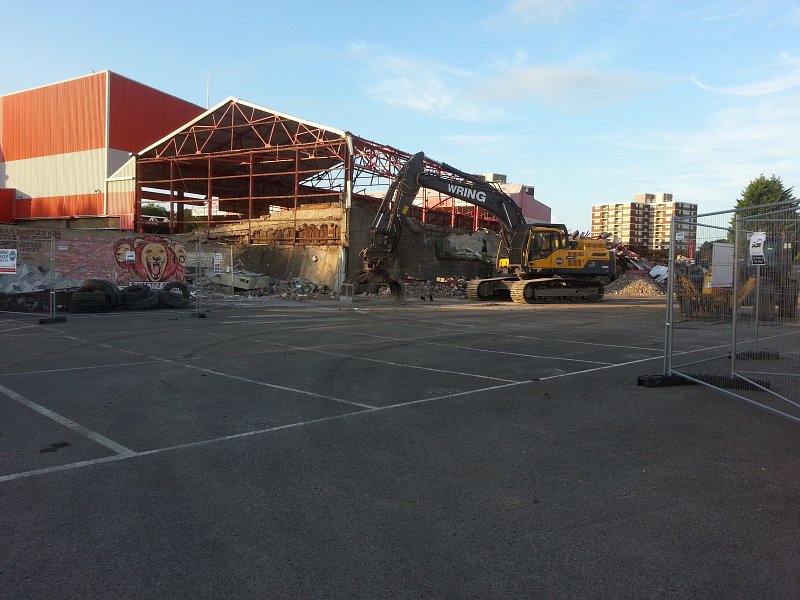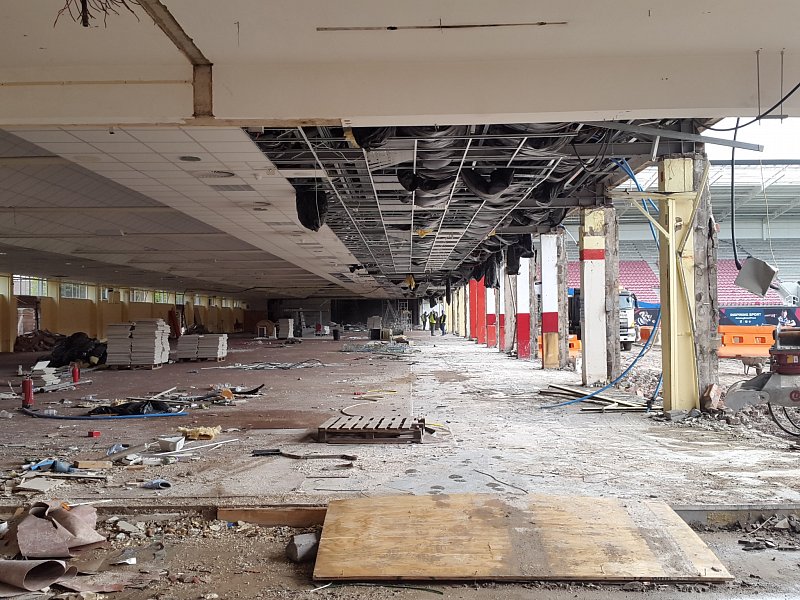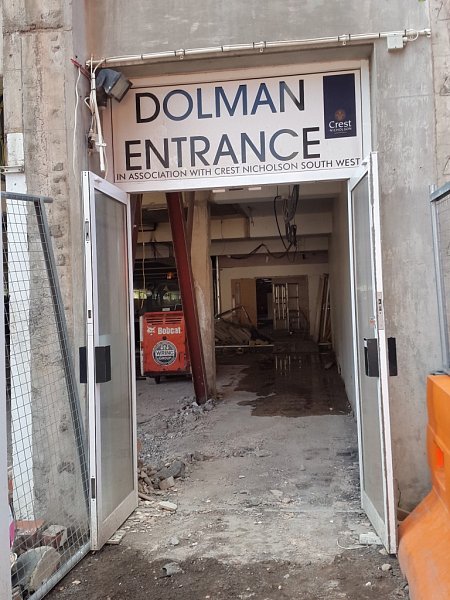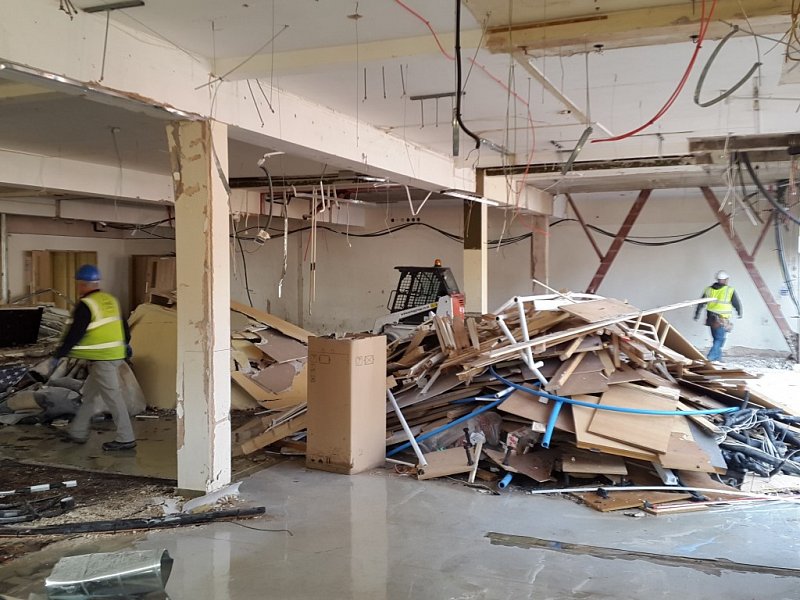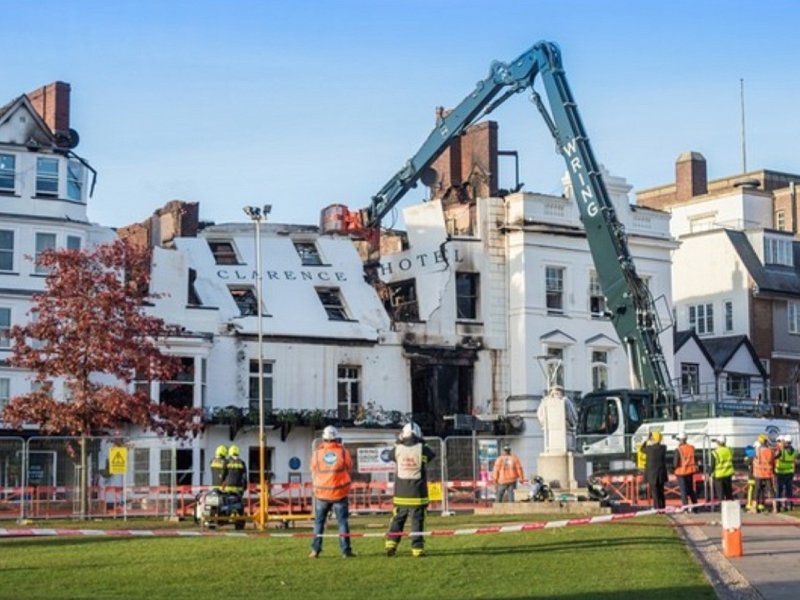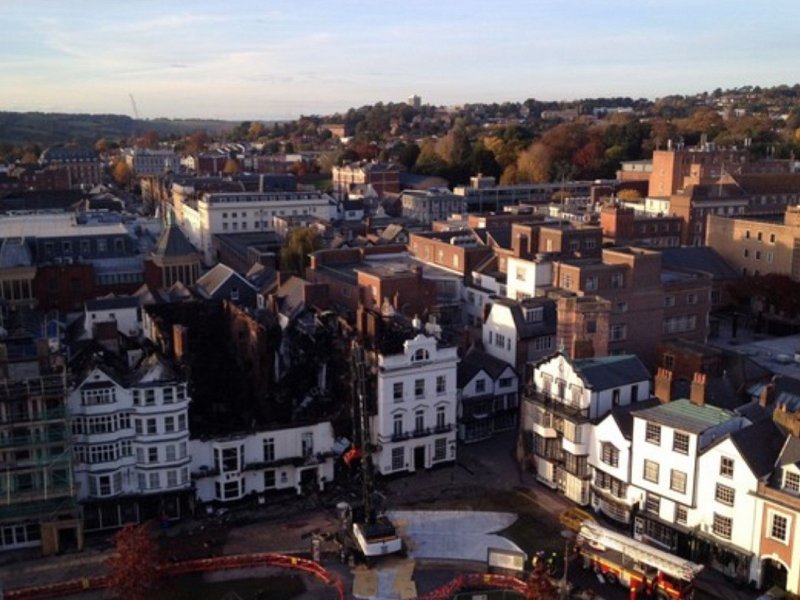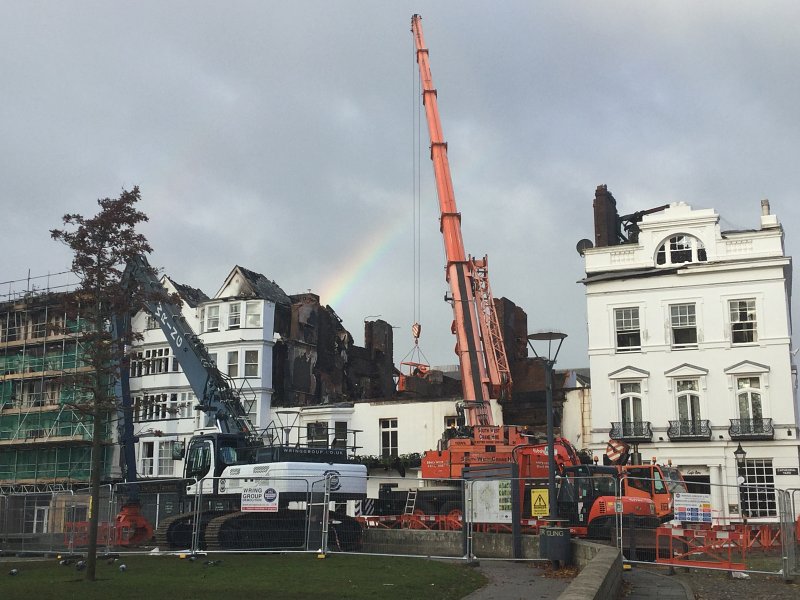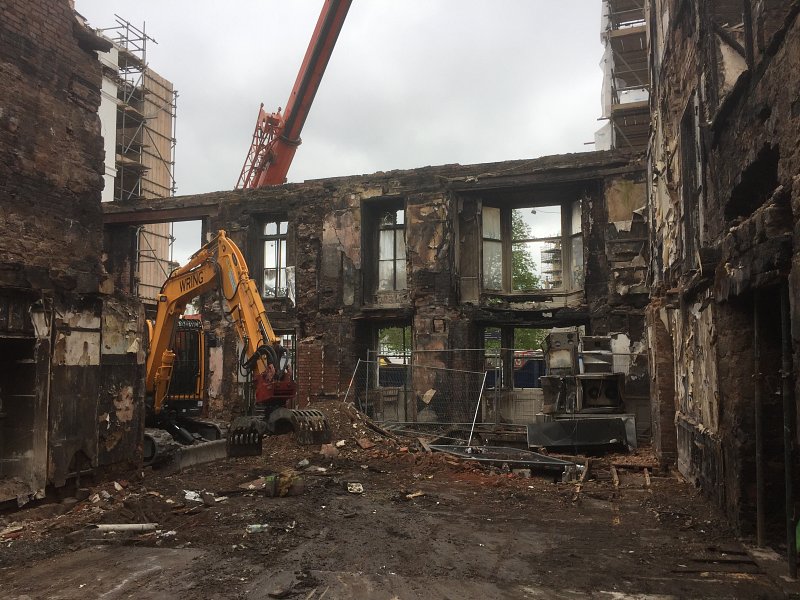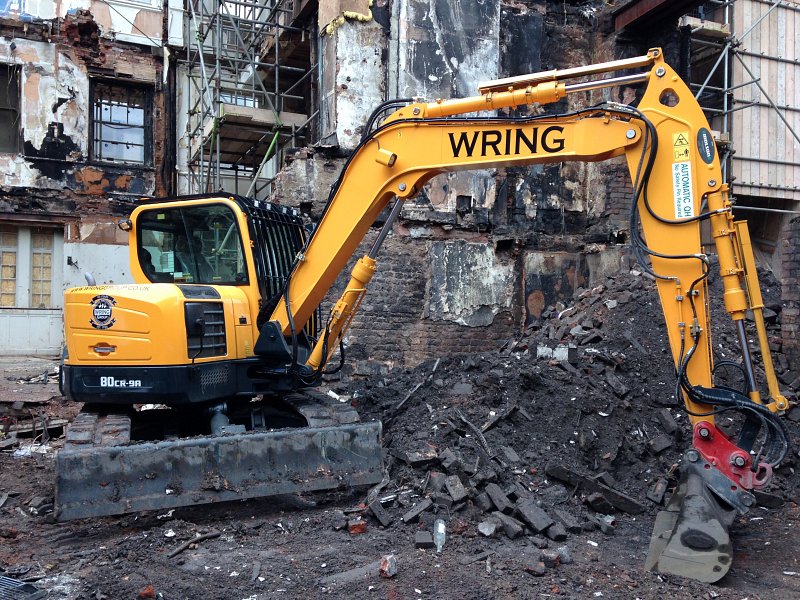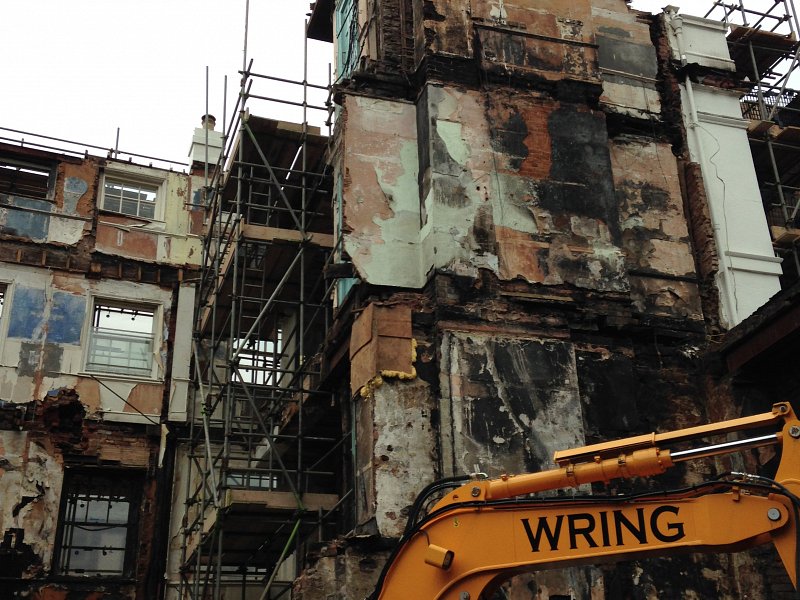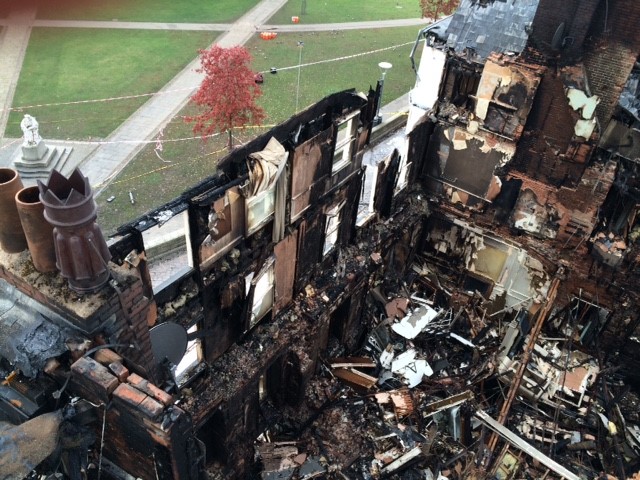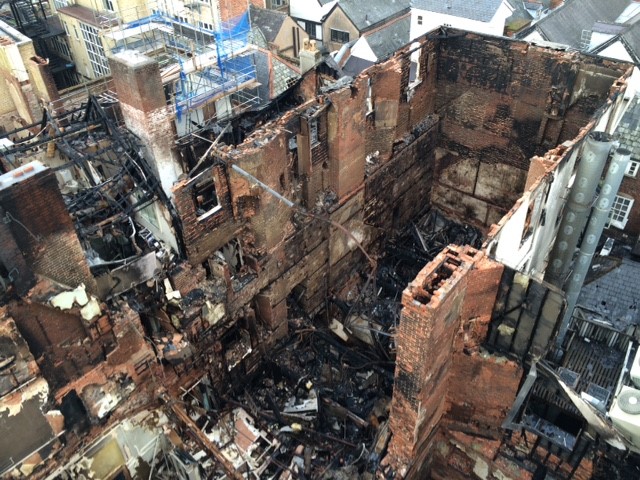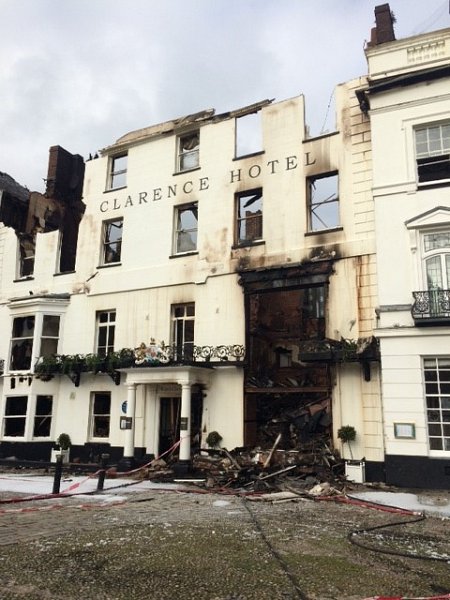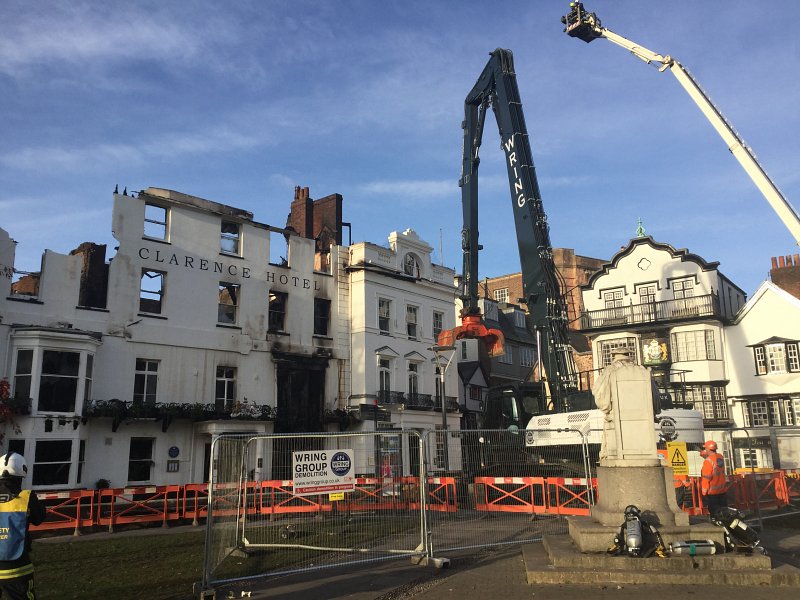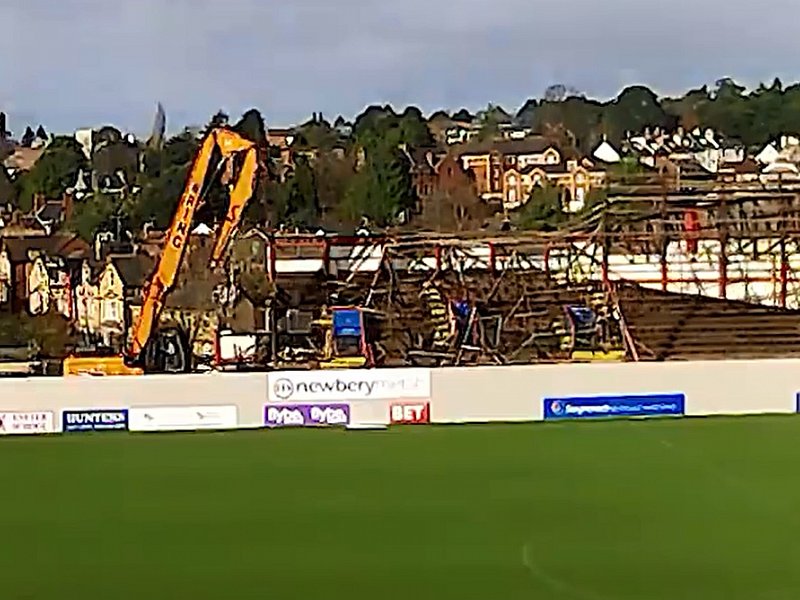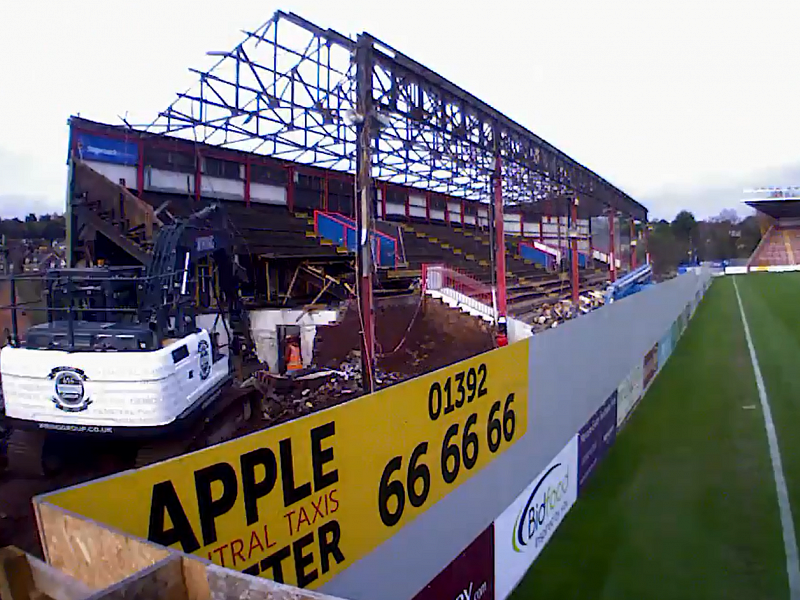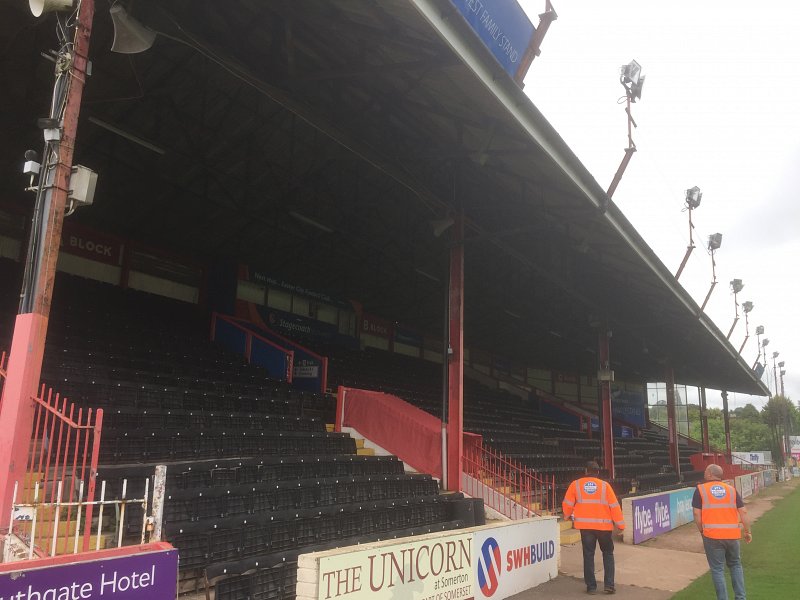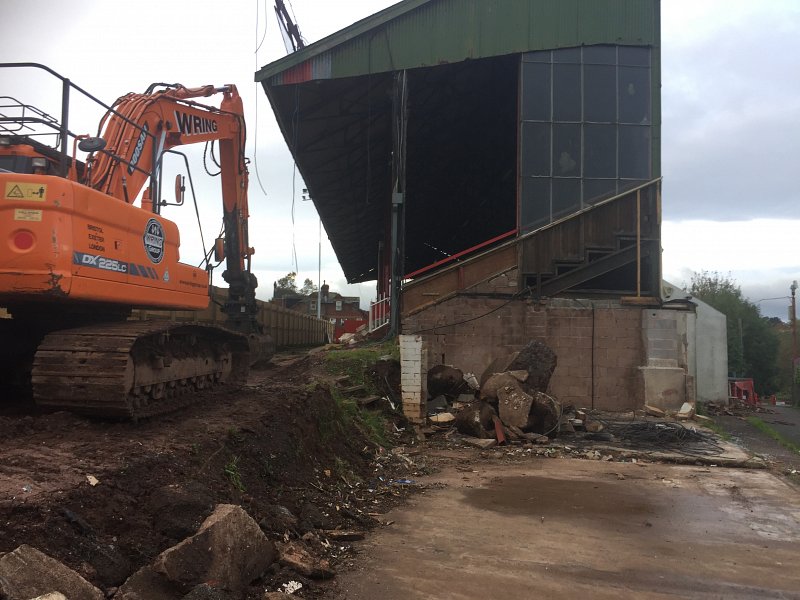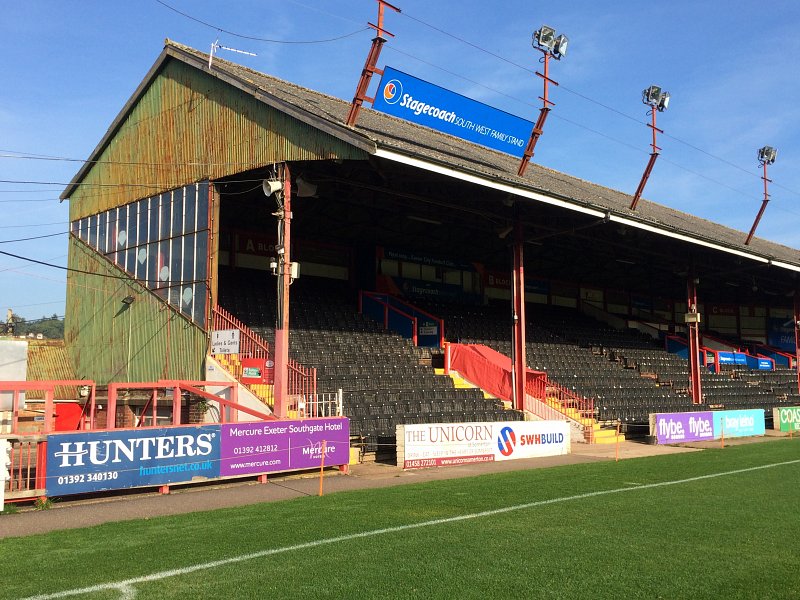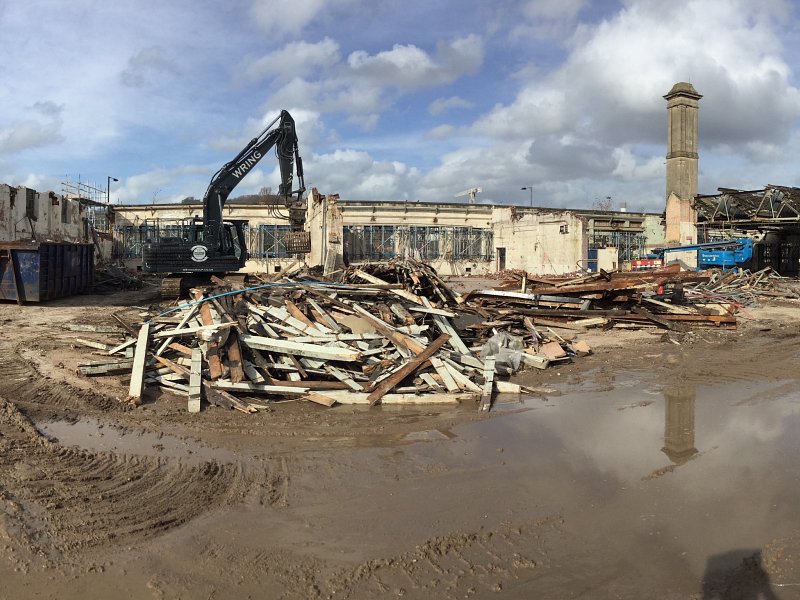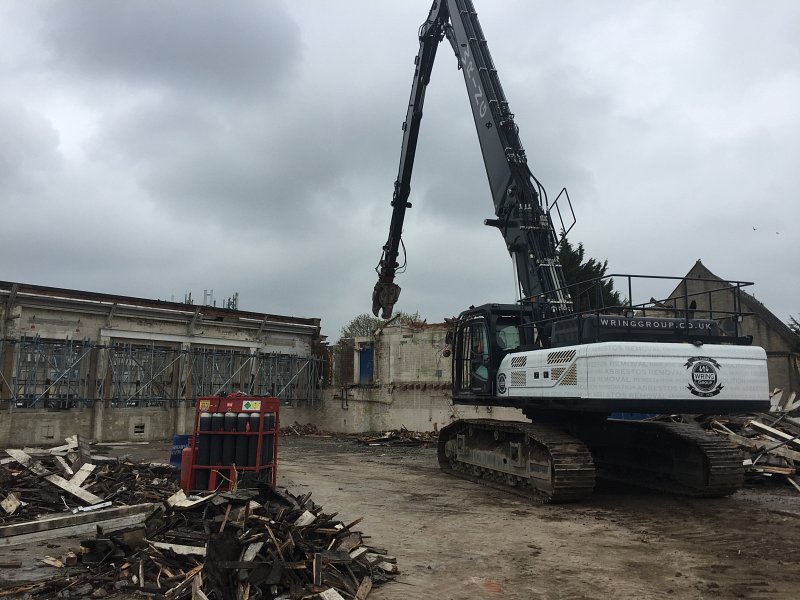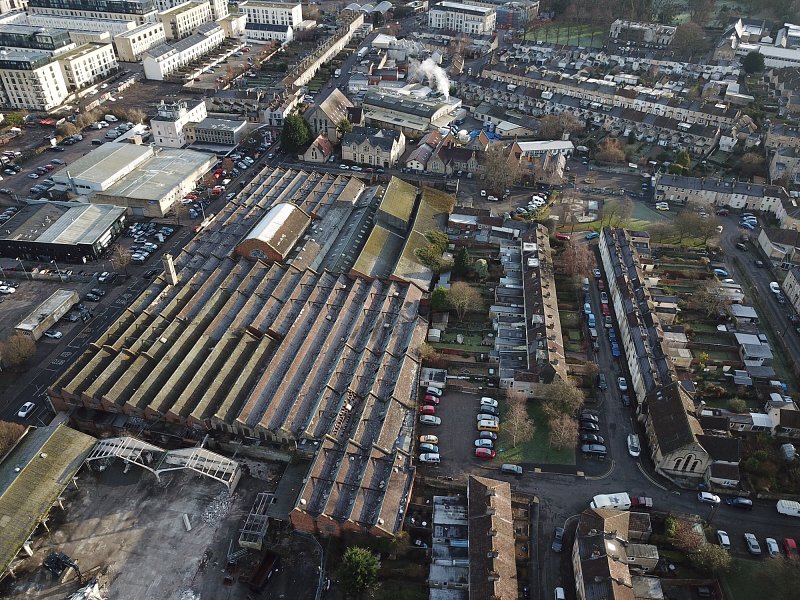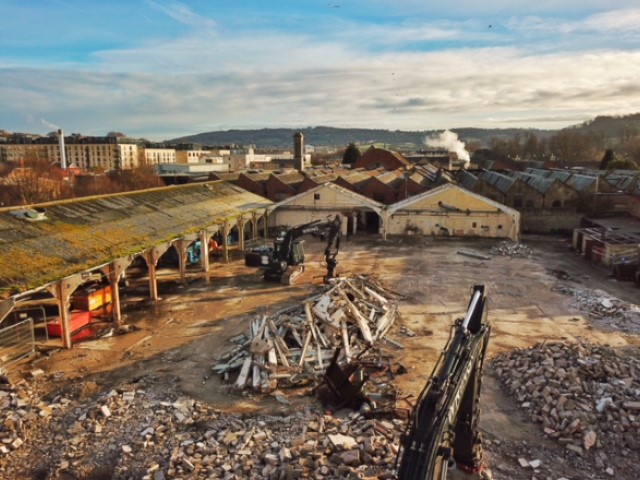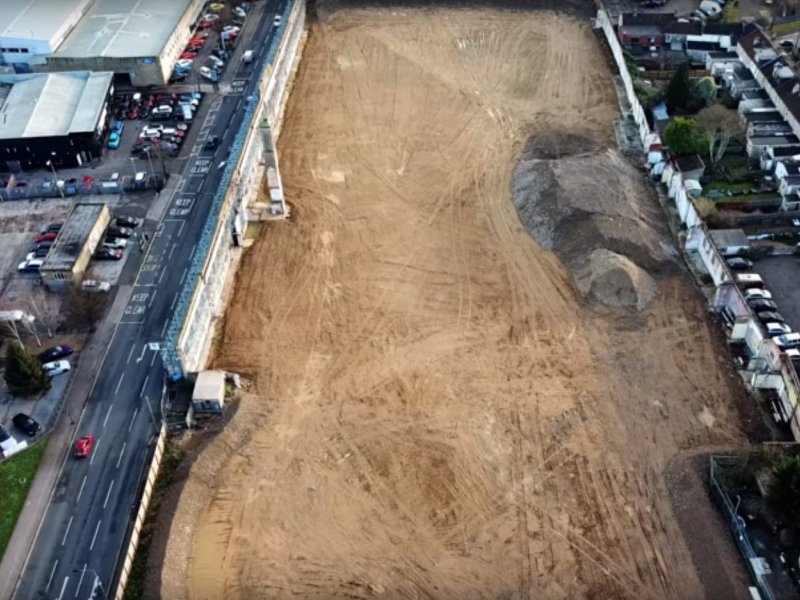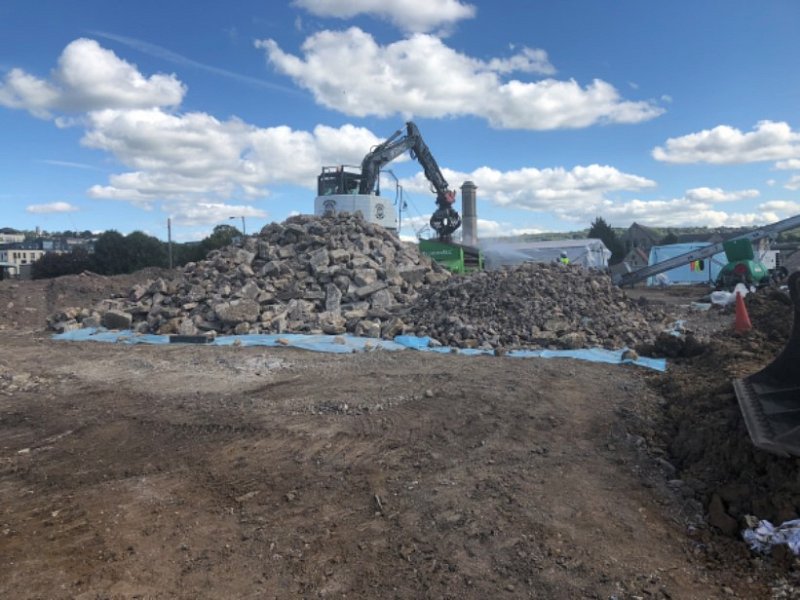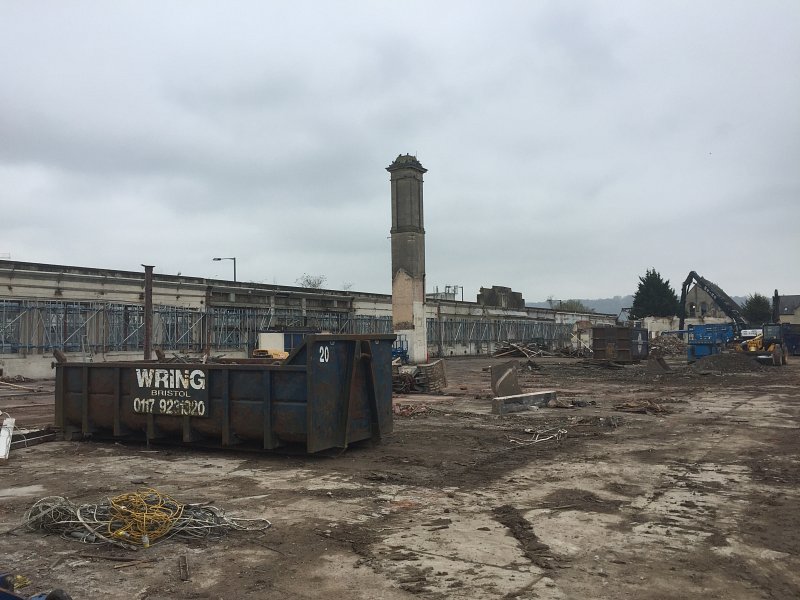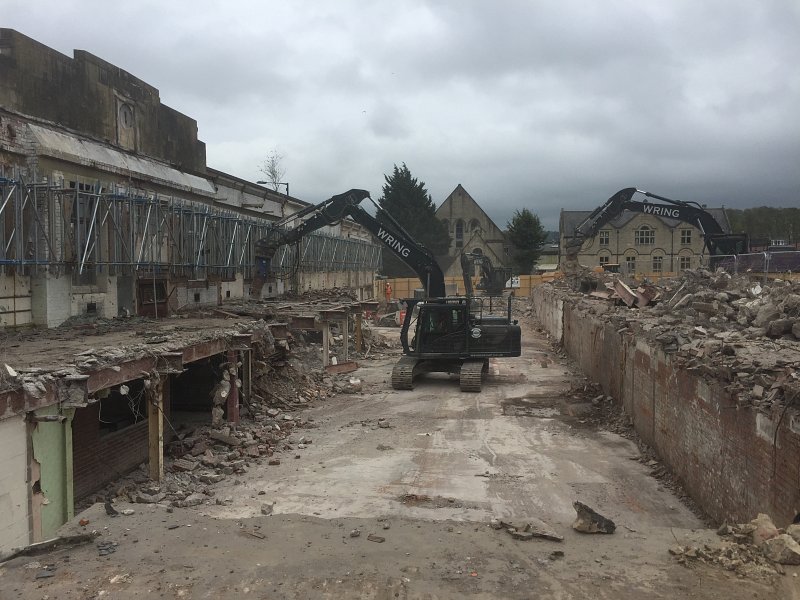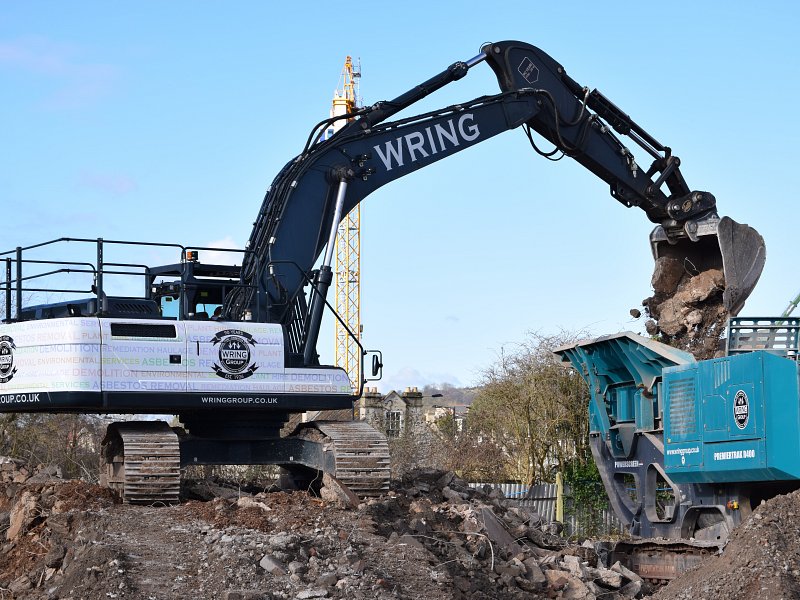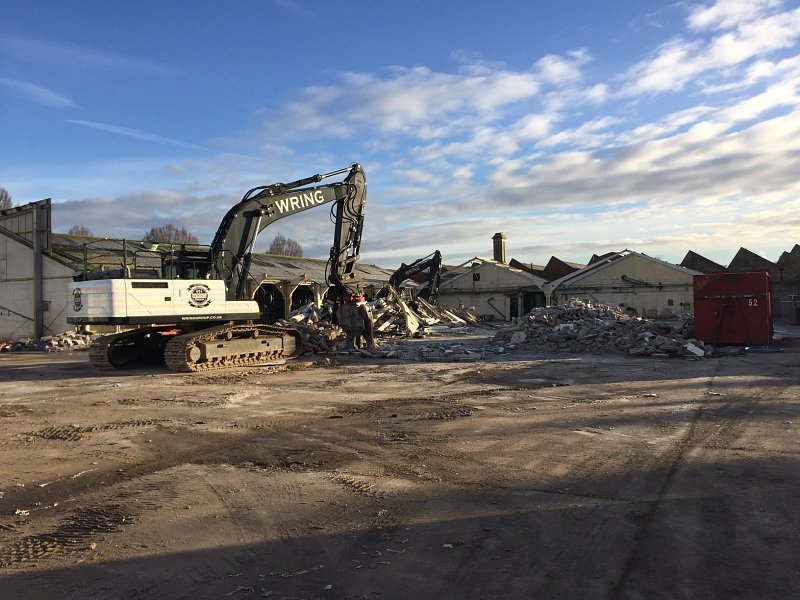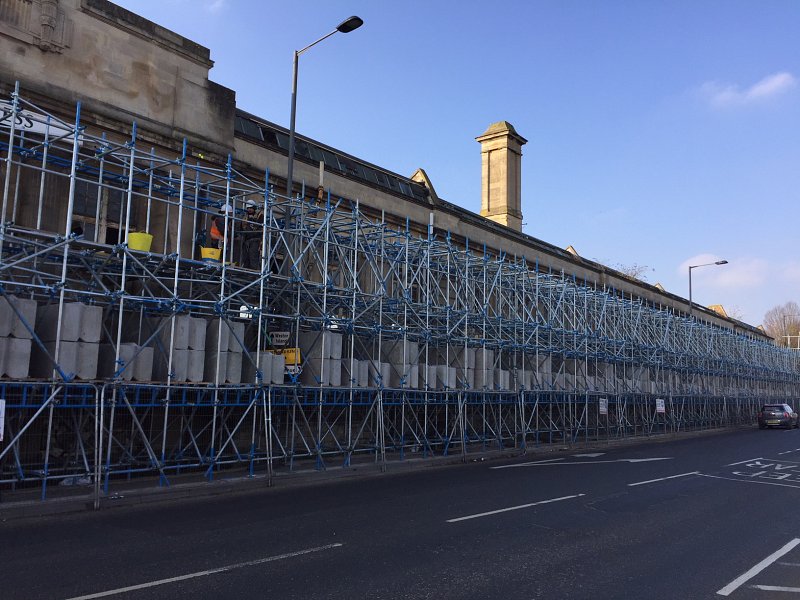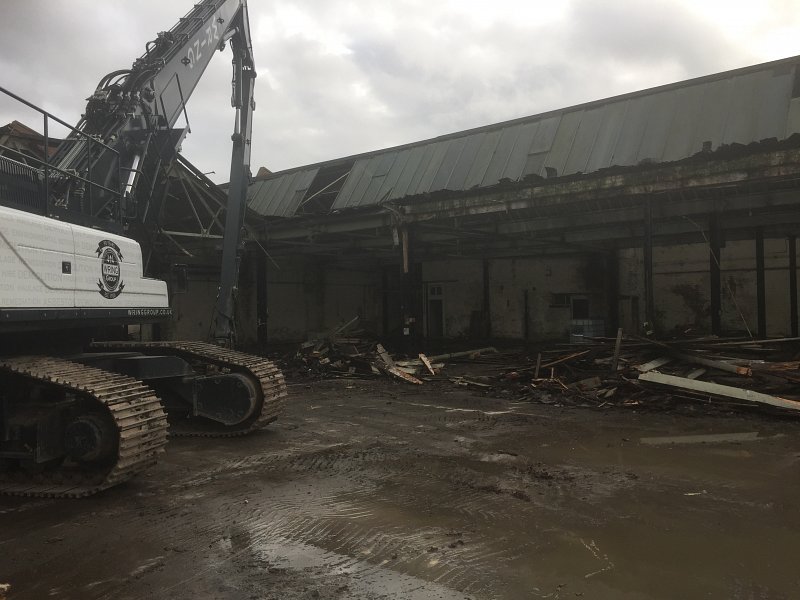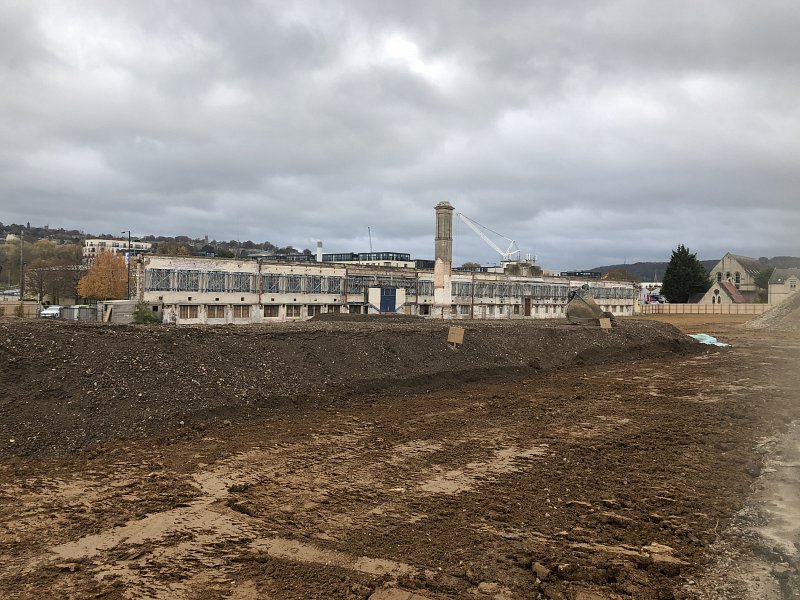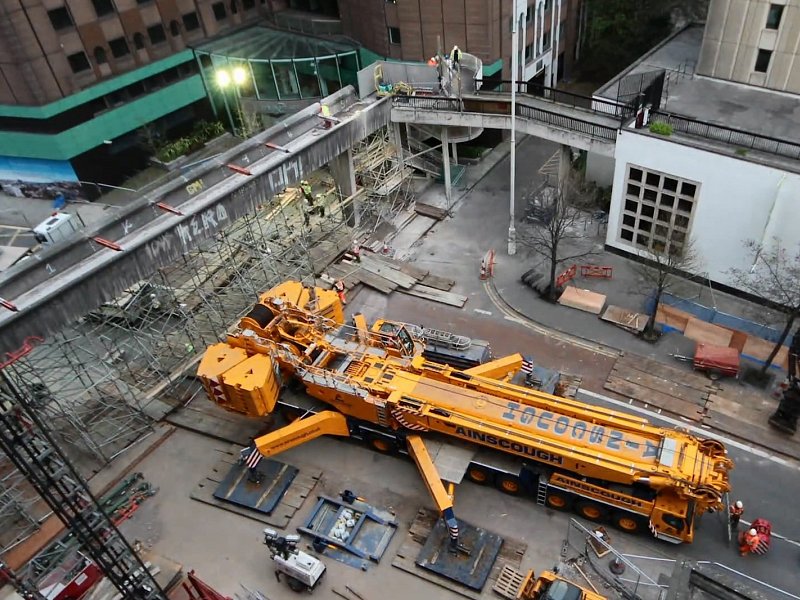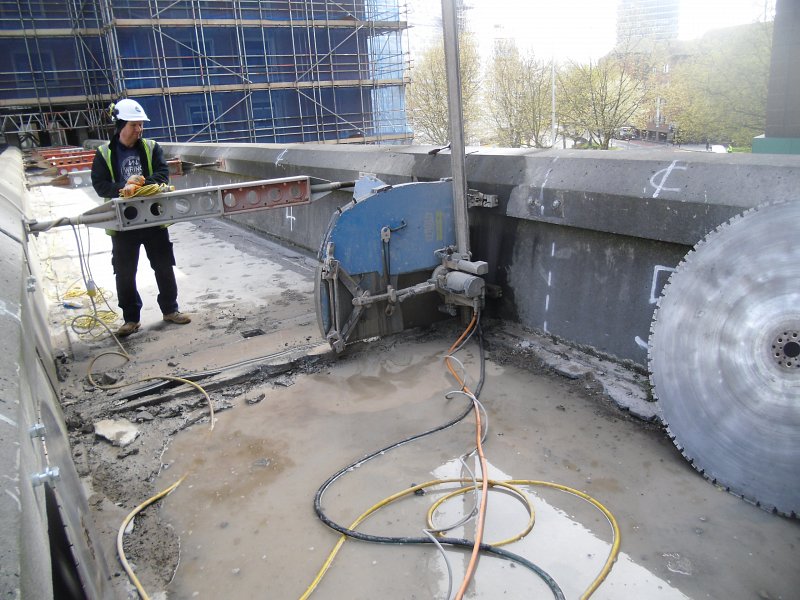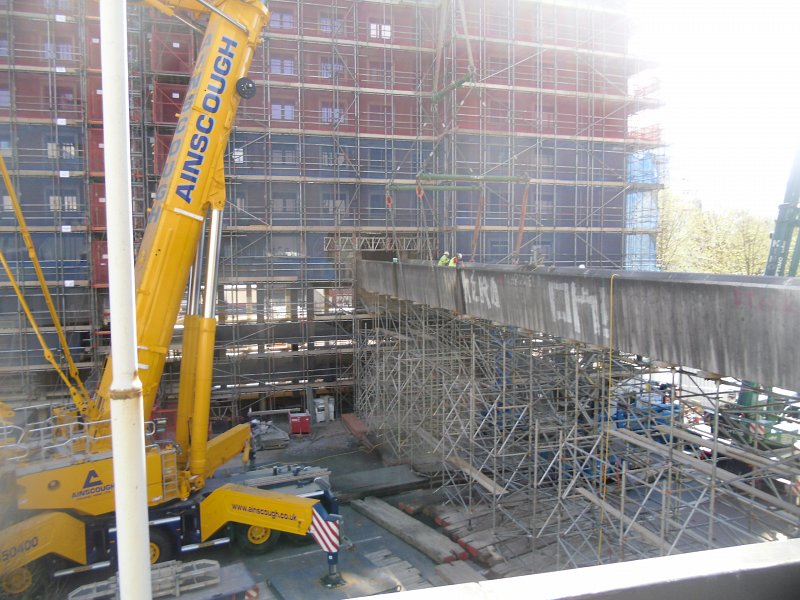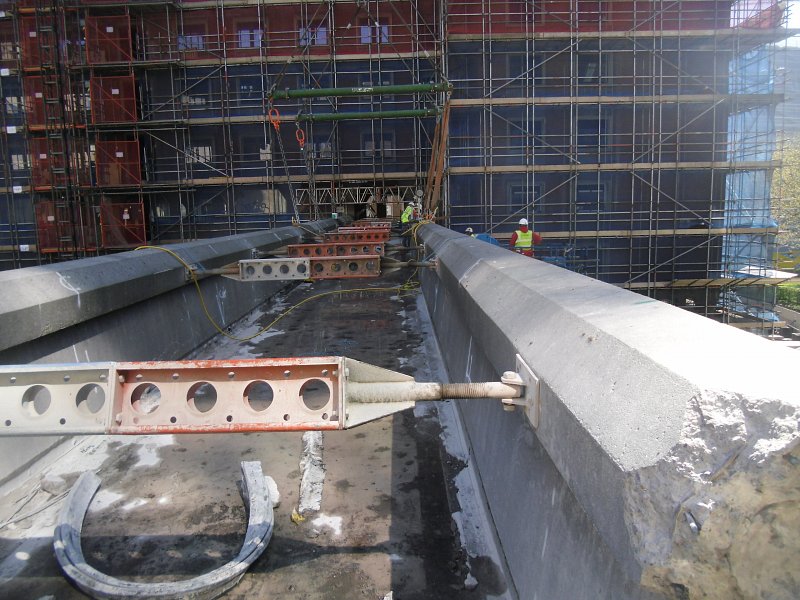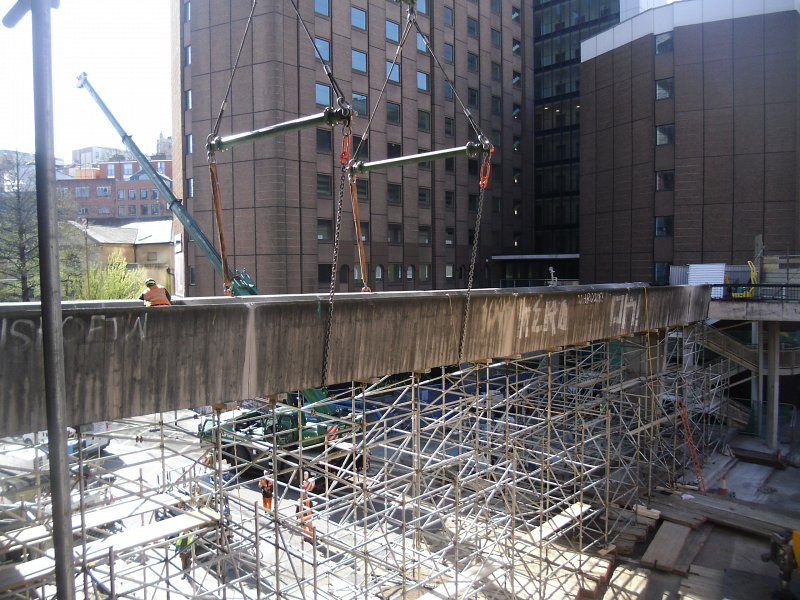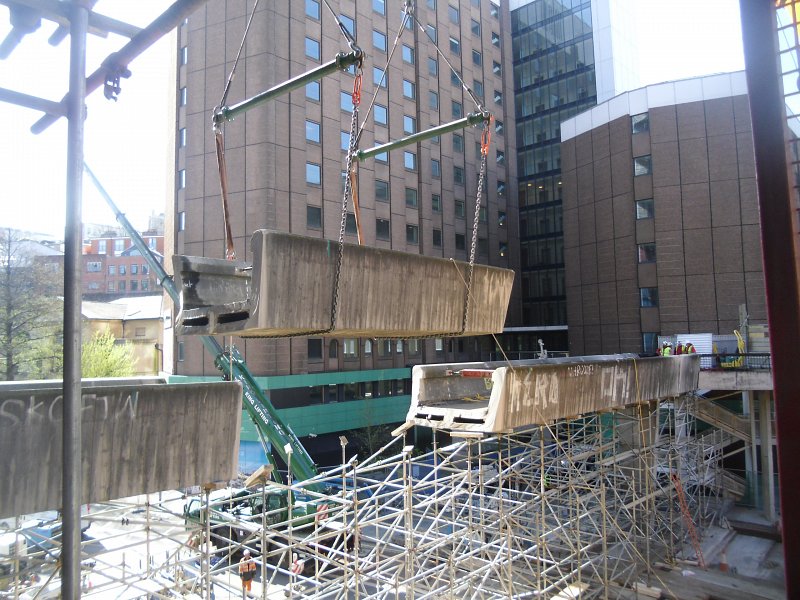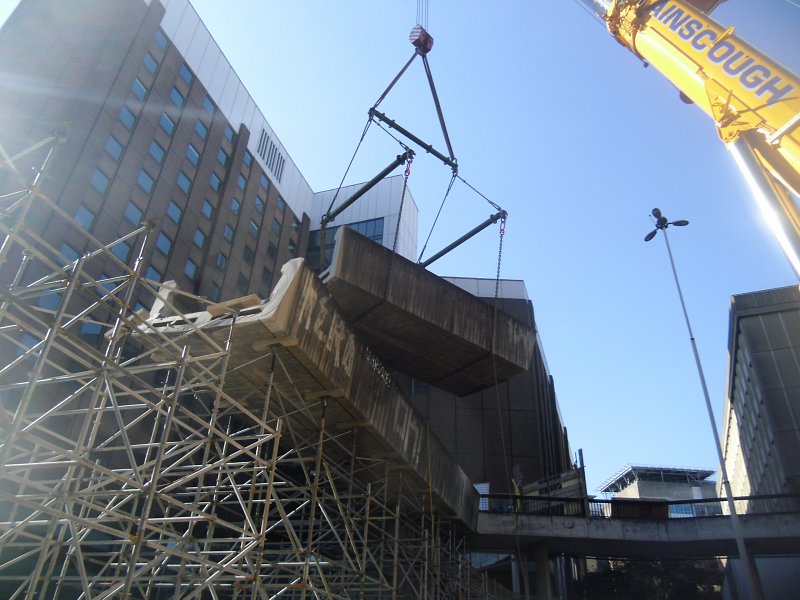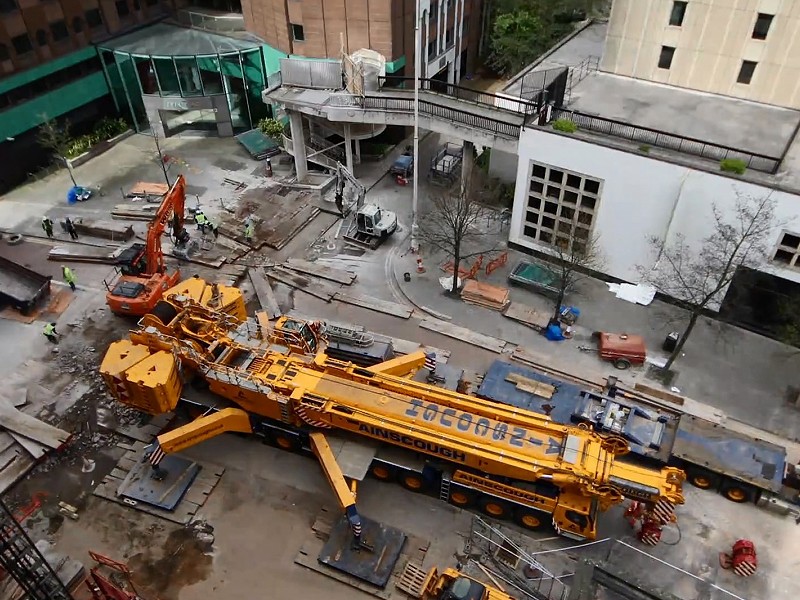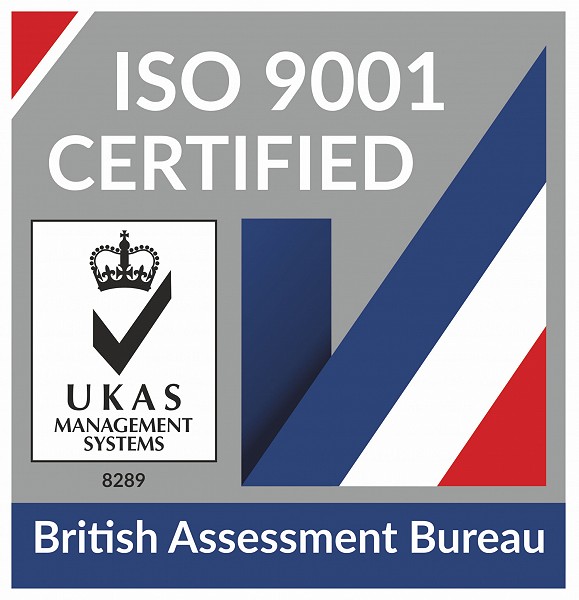-
Cadbury Site
Cadbury Site

-
Kingsmead House
Kingsmead House

-
Innovia Films Remediation
Innovia Films Remediation

-
Ashton Gate Stadium
Ashton Gate Stadium

-
Royal Clarence Hotel
Royal Clarence Hotel

-
Exeter City Stadium
Exeter City Stadium

-
The Former Bath Press
The Former Bath Press

-
Lewins Mead Footbridge
Lewins Mead Footbridge

Cadbury Site
Length of Project: 24 months
Completed in: December 2016
Wring Group were awarded the contract for demolition of a large portion of the former Cadbury factory in Keynsham, Bristol and were tasked with removing asbestos and decontaminating the old boiler house, demolishing portions of the main blocks, and removing linking and ancillary buildings. One of the highlights of the project was the removal of the historic Cadbury sign on the building and its safe handover to the developer.
The demolition works were part of a large redevelopment programme on the historic site so special attention had to be taken to ensure that the buildings being demolished were carefully separated from the structures that remained and that the overall site was left in a very good condition.
A large variety of demolition methods were used including; floor sawing, manual cutting of steel structures and the extensive use of our specialist high-reach demolition plant.
Wring Group also delivered a very high percentage of material reuse from the site, recycling over 10,000 tonnes of hardcore and 3,000 tonnes of steel by the end of the demolition contract.
Kingsmead House
Length of Project: 25 Weeks
Completed in: June 2015
Working on the demolition of Kingsmead House, a 9-storey office block in the centre of Bath, carried a set of challenges that Wring Group tackled with unique solutions. The building was surrounded on three sides by busy main roads and had a very tight working area with little space for large vehicles. Alongside this, the building also neighboured a BT communications facility that housed sensitive electronic equipment, meaning extensive noise and dust suppression measures had to be in place.
To solve these challenges, Wring Group used a top-down demolition plan, utilising small demolition plant and robotic breaking rigs working floor-by-floor to remove portions of the building and progress clearance of debris to ground level via the building’s lift shaft, minimising disruption to the surrounding area. A scaffolding wrap of the entire building was also installed to minimise dust dispersion.
Another unique challenge for this project was the careful removal of the building’s local bath stone cladding. This was done by hand at the front end of the programme to ensure it could be re-used for future redevelopments on the site.
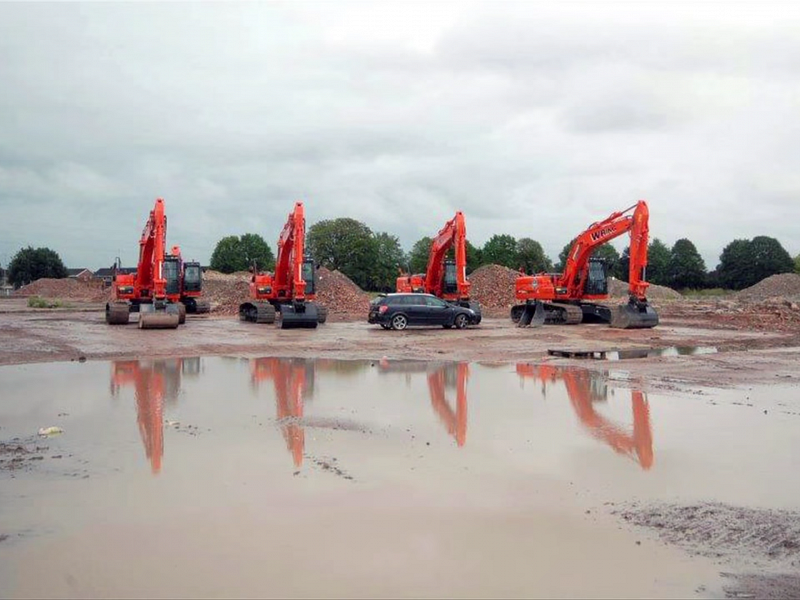
Innovia Films Remediation
Length of Project: 11 months
Completed in: August 2013
Wring Group also has experience performing site remediation and removal of chemical contamination from sites to ensure they are safe for redevelopment. These projects fall in line with our company commitment to sustainability and protecting the environment.
A past example of this is our work at the former Innovia plastic factory in Bridgwater. The building itself had already been demolished, and Wring Group worked to break out the remaining floor slabs and foundations, and to remove identified contamination hot spots.
This was a very large project, taking place over a wide site. A large number of excavators were used for the extensive earthmoving efforts required, and careful coordination of plant and other equipment was needed to ensure the project was completed on time.
Ashton Gate Stadium
Length of Project: 12 Months overall
Completed in: August 2015
Wring Group won the contract for the demolition and modifications to a series of stands at Ashton Gate Stadium, home of Bristol City F.C. This was a very high-profile project subject to constant media attention. Coupling this with the stadium having to remain live over the course of the works made this project one of the most unique challenges for Wring Group to date.
The works themselves consisted of the complete demolition of two stands and the partial demolition of another, along with the demolition of a series of ancillary buildings. Asbestos removal and soft stripping also took place. For each of the individual stands, a comprehensive plan had to be devised for their safe removal from the constrained space of the stadium. Our 70-ton high reach demolition plant was extensively used during this project, utilising their capability to remove large structures whilst operating from confined spaces.
With thorough pre-planning to ensure access for other contractors within the site the contract works were completed within schedule without disrupting the stadium’s daily activities.
Royal Clarence Hotel
Length of Project: 12 months
Completed in: October 2017
In October of 2016 Exeter’s Royal Clarence Hotel, described as the oldest hotel in England, was sadly ravaged by a fire that had spread from a nearby building. Wring Group were immediately called in by the fire service to assist them in containing the fire. Wring Group were on site within 24? Hours and our machinery was used to help the fire service damp down “hot spots” still present within the remnants of the building.
As soon as the fire had been fully extinguished, Wring Group began to demolish portions of the building that were unstable. This was done in a swift fashion to guarantee the safety of the area, whilst ensuring that as much of the historic building as possible could be preserved.
The building itself was in a confined area with several historic buildings nearby, including Exeter Cathedral. Due to this, Wring Group took a great level of care during the project to minimise disruption to the local residents and maintain good relations with them.
Exeter City Stadium
Length of Project: 10 months
Completed in: April 2018
In 2017, Wring Group were contracted to undertake the demolition of two stands at the Exeter City Football Club. The demolition specified details for the removal of the Away Stand and the Stagecoach Stand, including the removal of asbestos containing products from both. The stands were of different sizes and had varying demolition requirements, but both had to be removed in a very constrained space.
The Away Stand specified for the removal of the concrete terrace that formed the bulk of the stand, as well as the removal of entry turnstiles, handrails, fencing and signage. Adjacent buildings including a refreshment hut and a toilet block also had to be entirely removed. The Stagecoach Stand also had to be removed in its entirety, including the careful removal of asbestos roof sheeting and the full demolition of the ground floor slab and excavating of foundations.
One of the unique challenges of this project was the proximity of the adjacent railway line; located to the back of one of the stands being demolished. The demolition plan was structured to ensure as little disruption as possible to the railway’s activities and that no material was ejected in the direction of the line.
The Former Bath Press
Length of Project: 14 months
Completed in: November 2018
Wring Group were employed to demolish the entirety of the former Bath Press Printing Works, including the removal of floor slabs and foundations, to pave the way for the redevelopment of the site. The project was large and complex in scope, with provisions for retention of the large façade and chimney at the front of the building and removal of large volumes of asbestos containing materials.
Following large scale asbestos abatement works, activities continued with a soft strip of the site to remove internal fixtures, pipework and electrical cabling and the installation of a temporary works scaffold to the listed façade. The main demolition consisted of the careful removal of asbestos roof sheeting and then the steady structural dismantling of the rest of the building structures. In general, the building was constructed from a steel frame with masonry walls and steel roof trusses. Work took place using our fleet of standard and high reach demolition plant. To ensure the stability of the retained façade, manual techniques were used to remove the final portions of the building.
Later portions of work on the project included remediation of known contamination hotspots to remove heavy metals and asbestos debris by screening of the made ground.
Lewins Mead Footbridge
Length of Project: Two Days
Completed in: April 2015
Wring Group were contracted to remove a concrete footbridge in a busy central Bristol location. The structure bridged a heavily trafficked thoroughfare so operations had to be carefully planned in advance as they were to be completed across a single weekend to minimise disruption to commuters and surrounding businesses.
Temporary road closures were agreed and put in place to enable a designed supporting scaffold to be erected below the bridge deck so that it could be cut into sections. These sections were then lifted and lowered via a 500-ton crane and placed on the road where demolition plant waited to process them so they could be taken off site for recycling. Once the entire bridge had been removed, the concrete supports were also demolished and the disturbed ground made good. In the end, the contracted works were completed as planned and the road left in pristine condition such that no problems were encountered when it was re-opened to traffic the following day. A great degree of collaborative planning and logistical effort was key to ensuring the operation was delivered successfully and on time.


